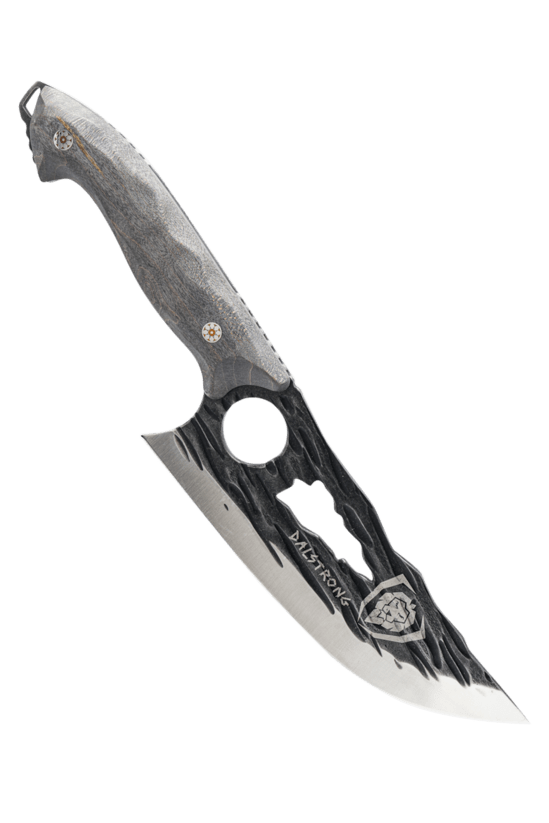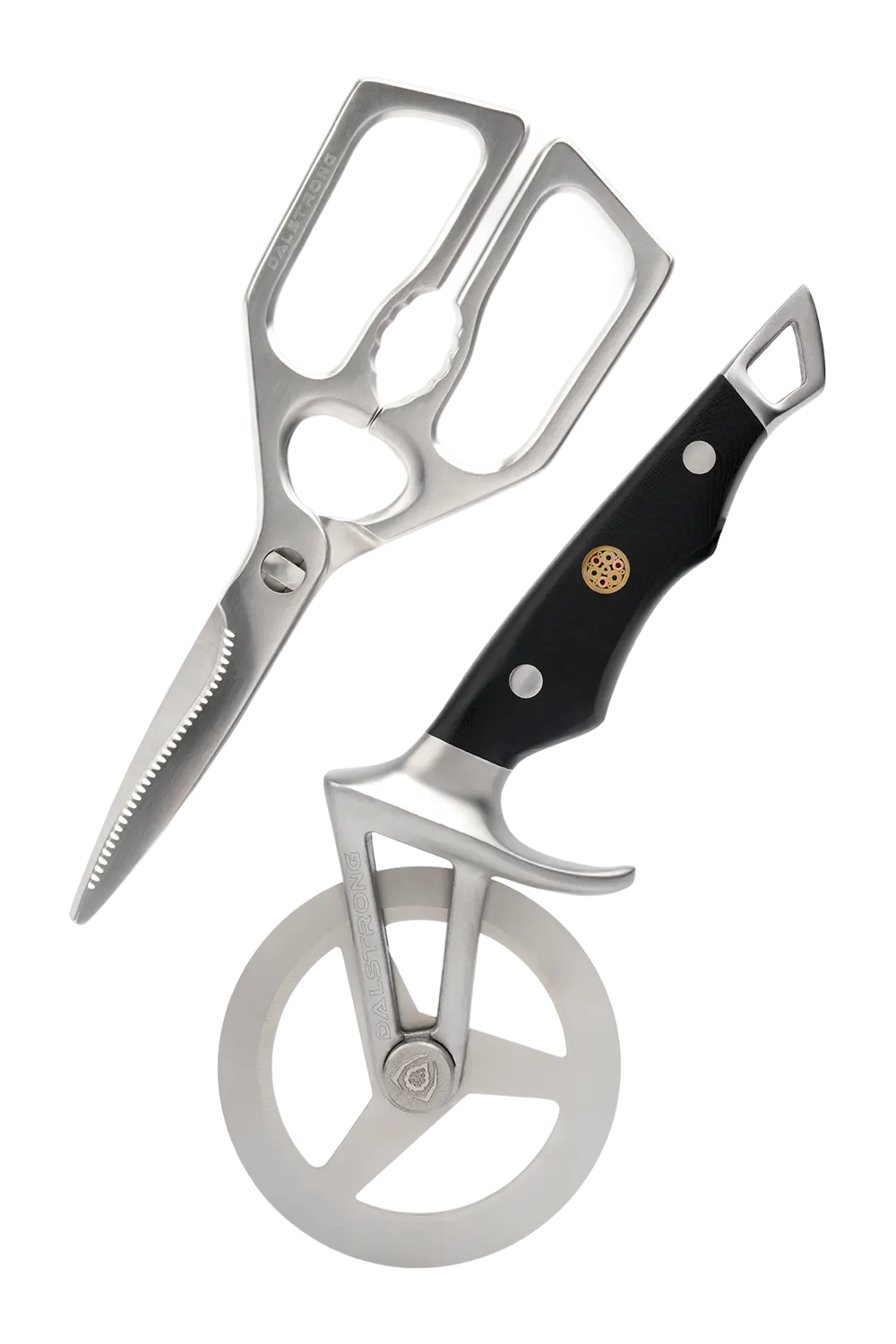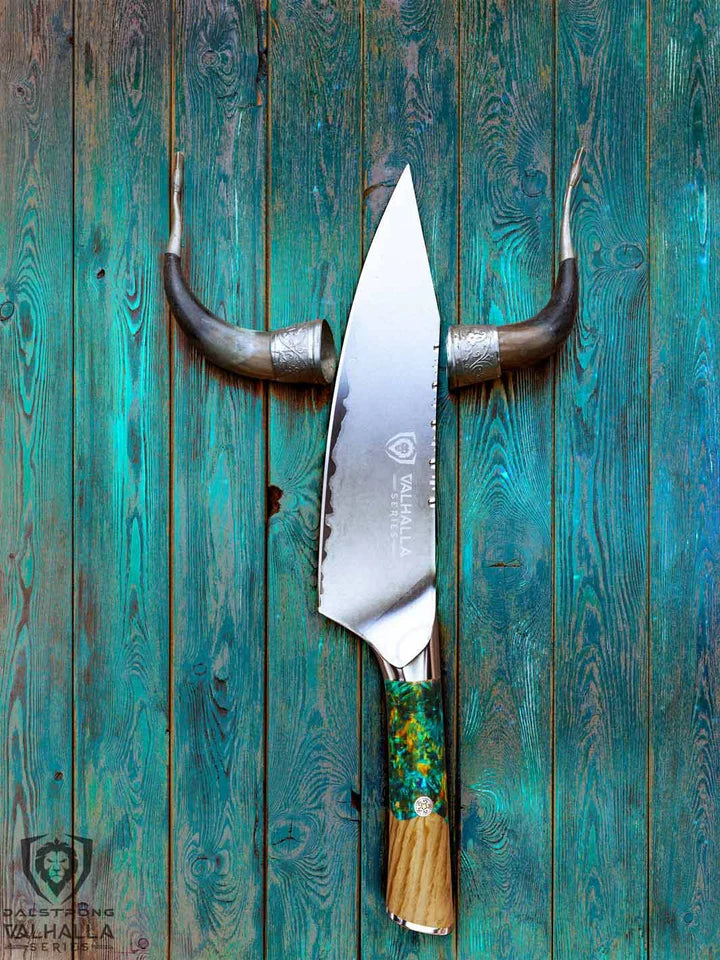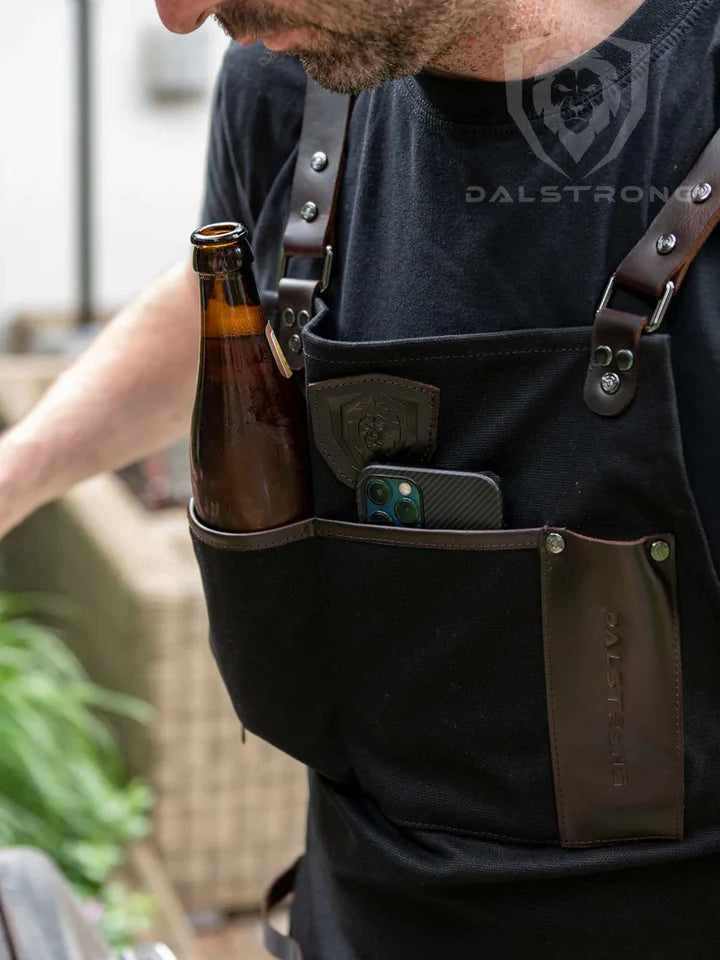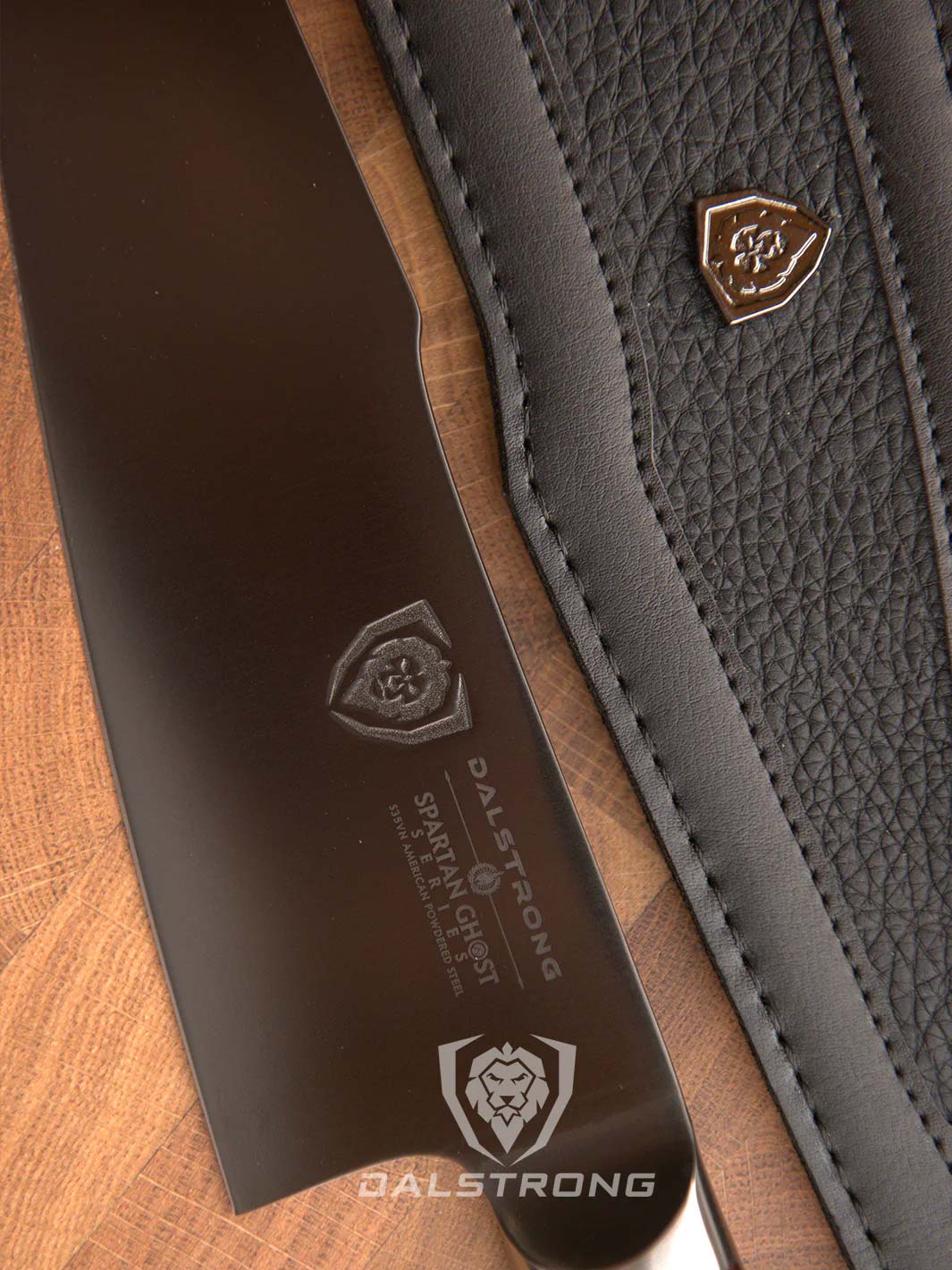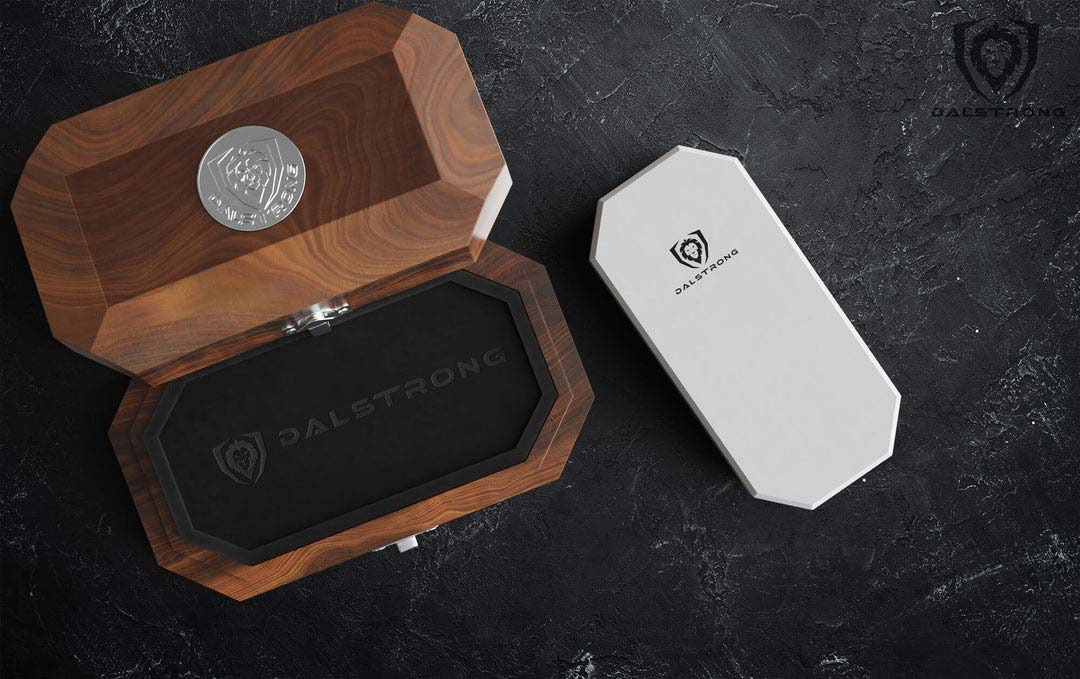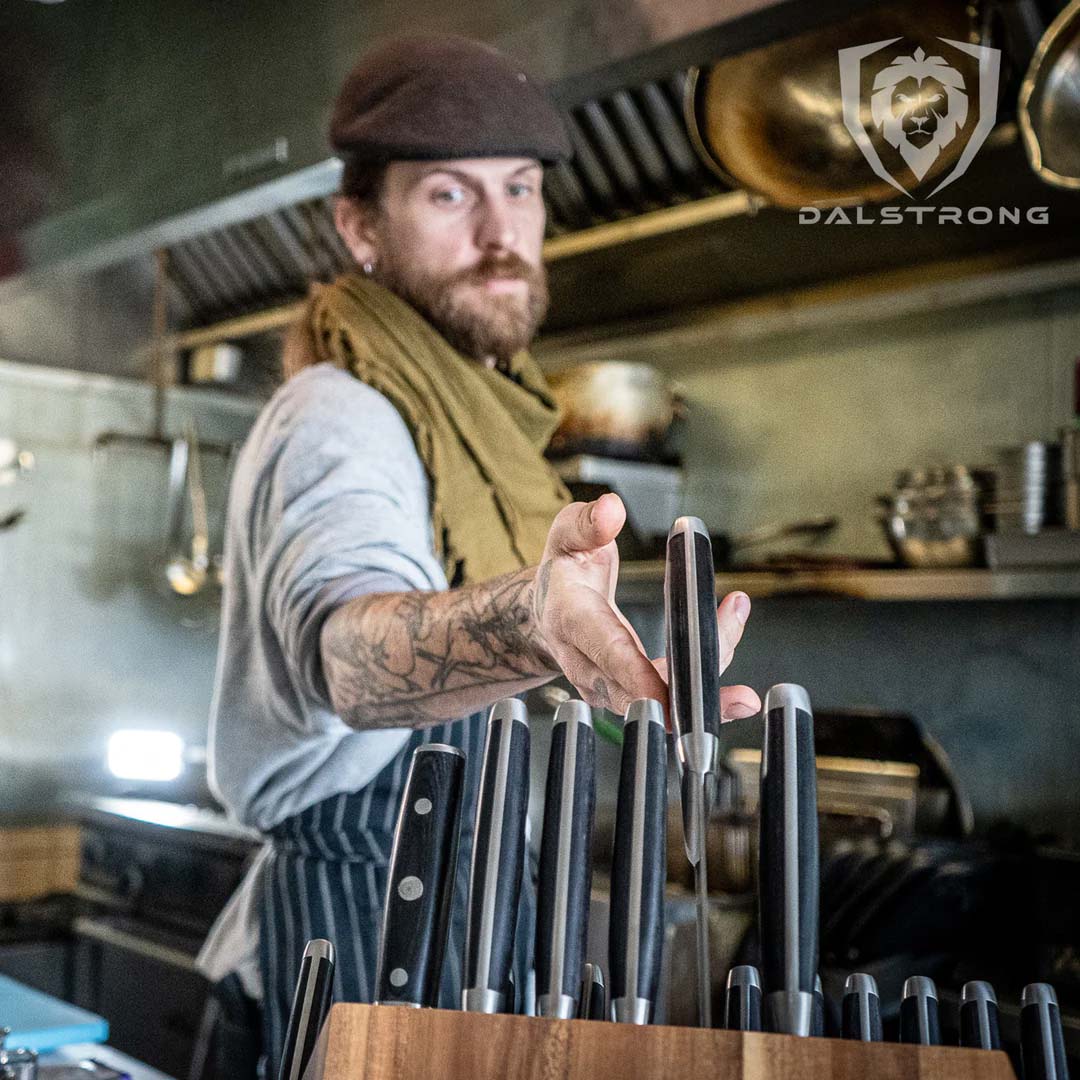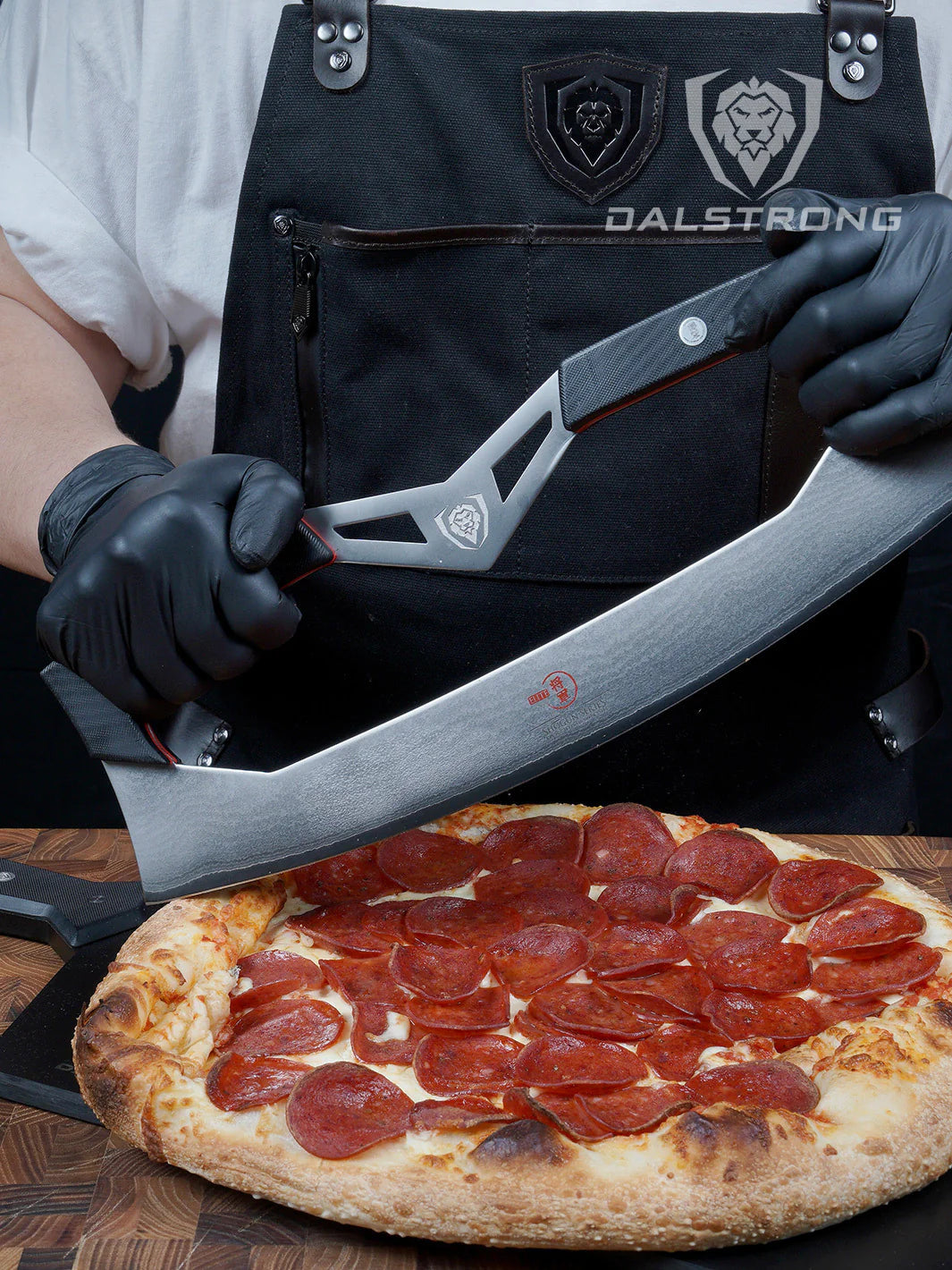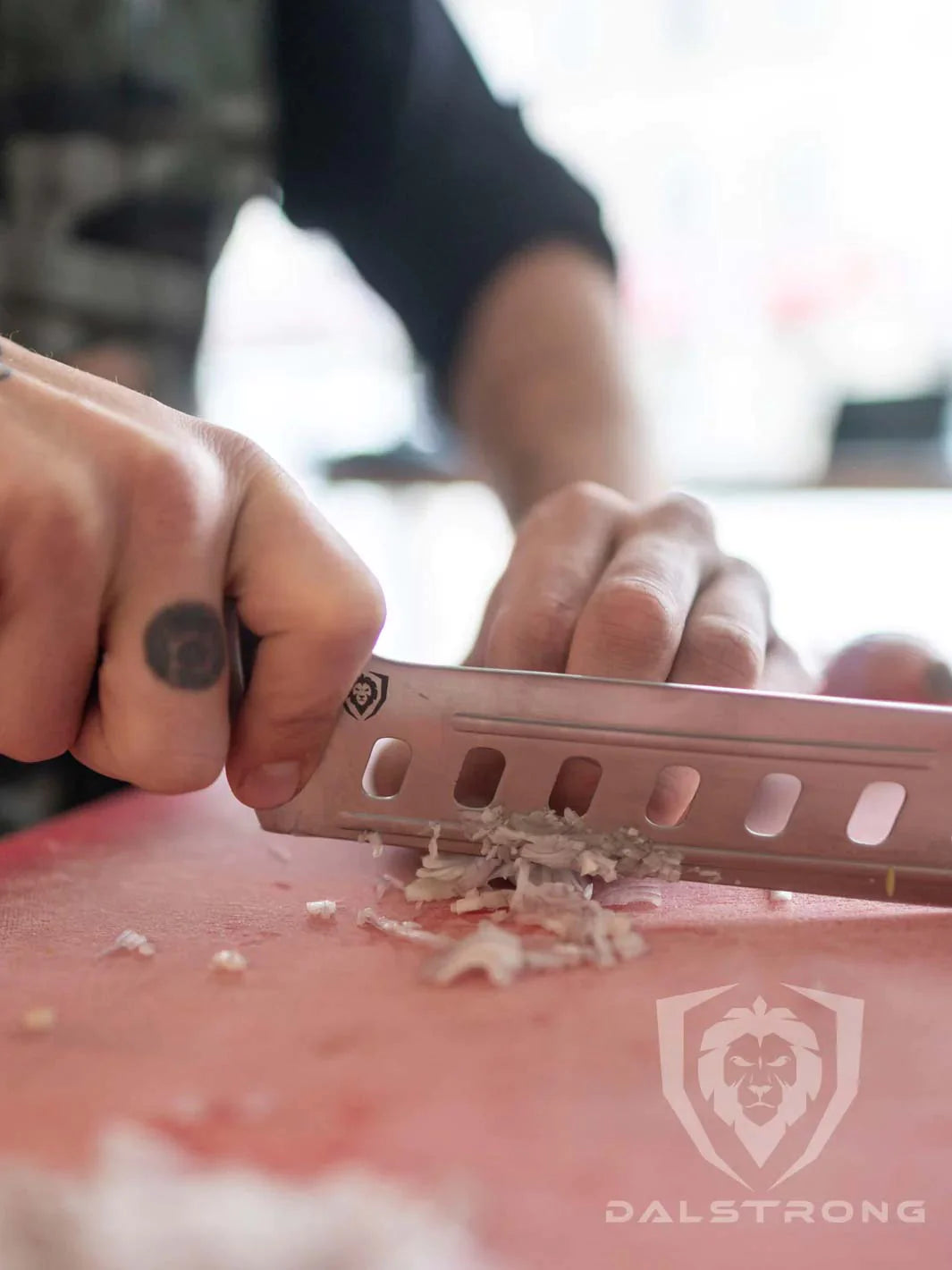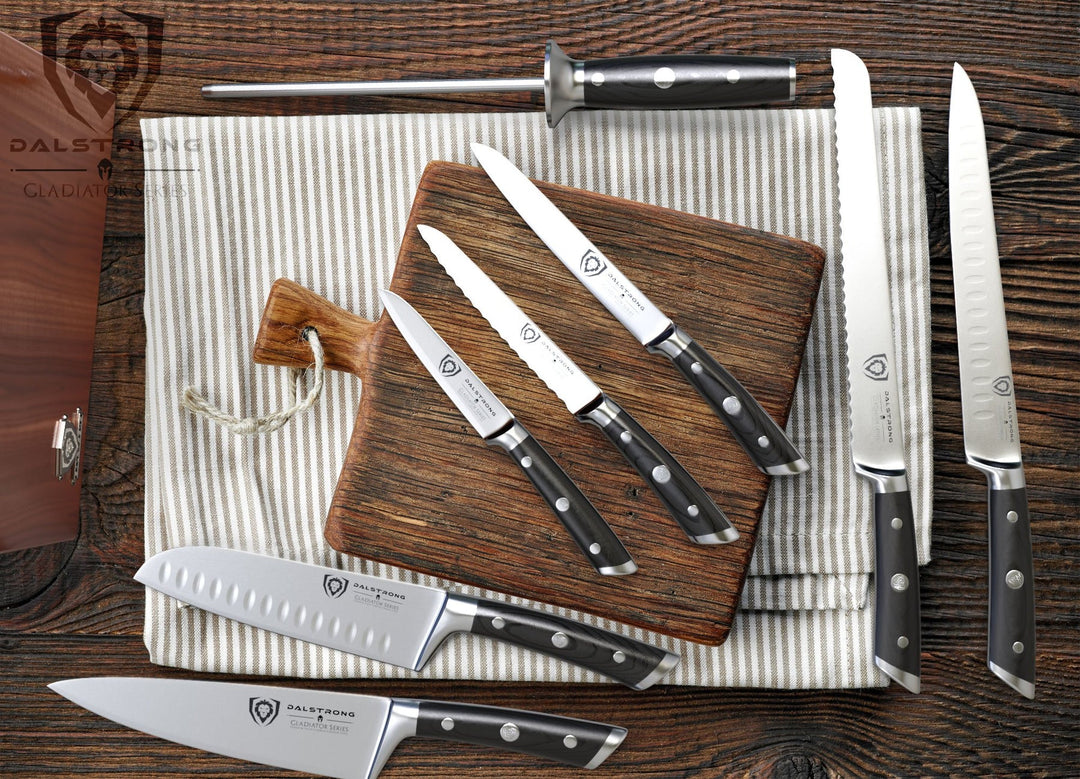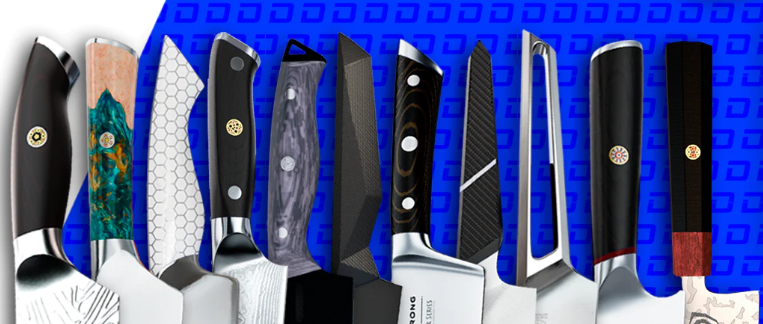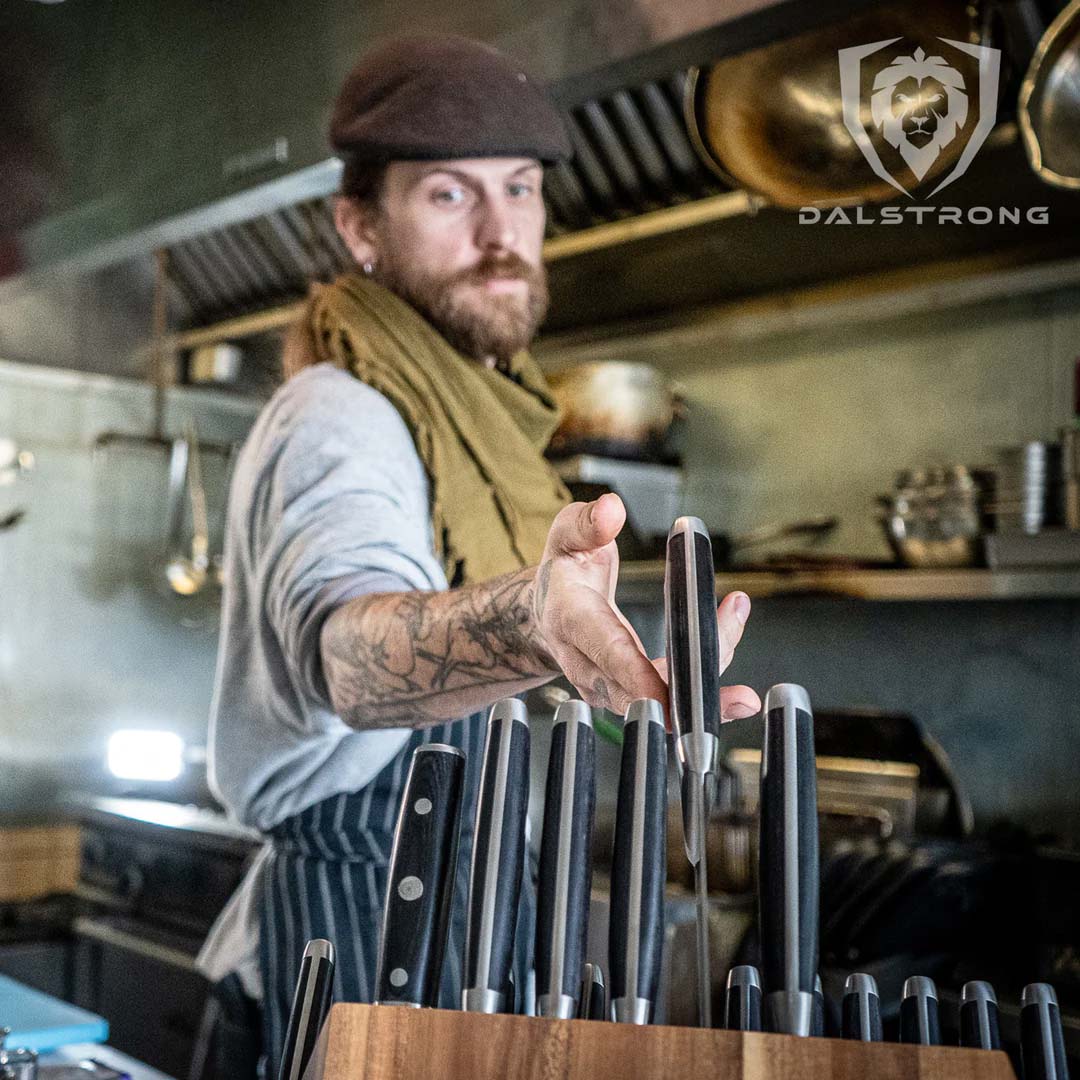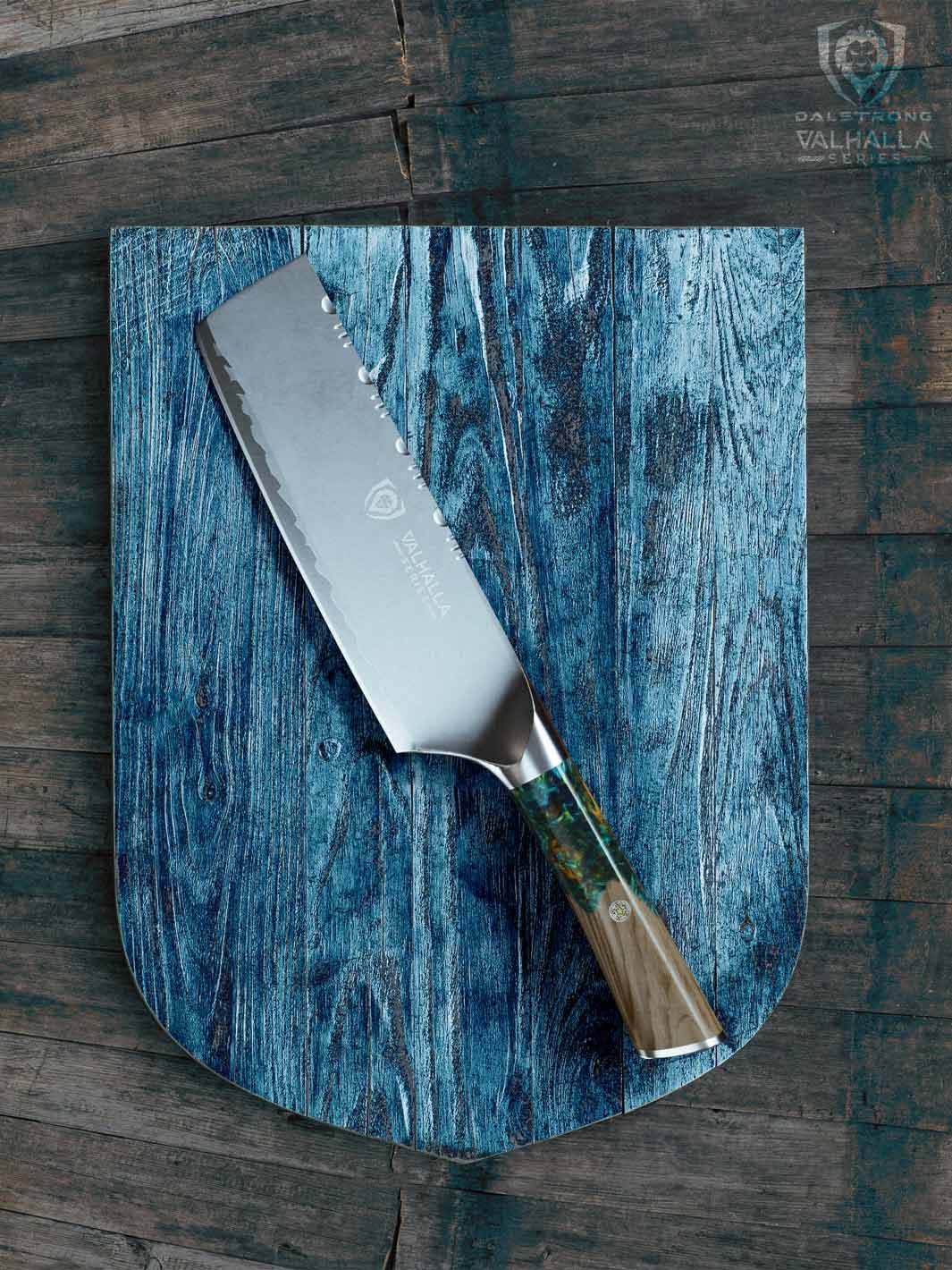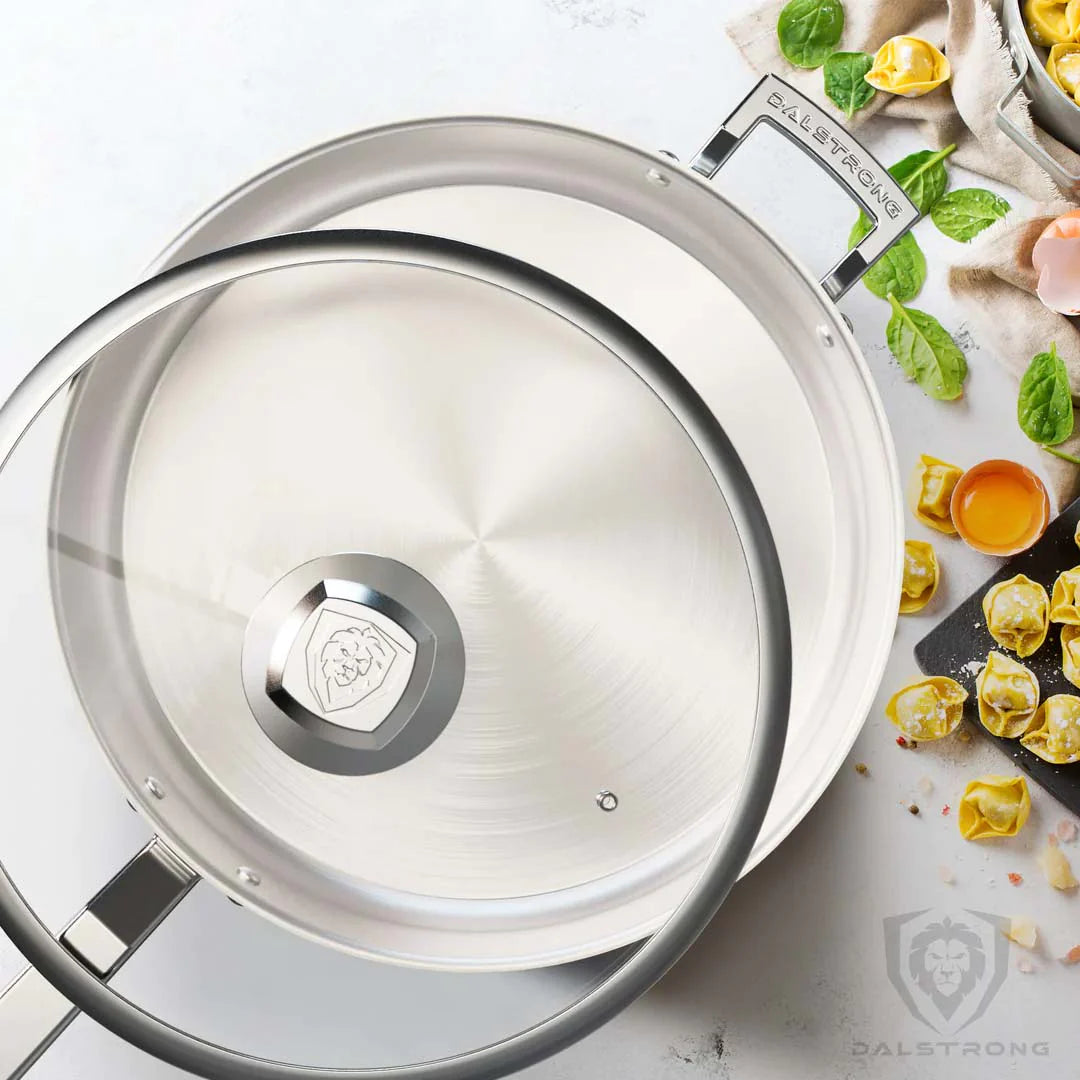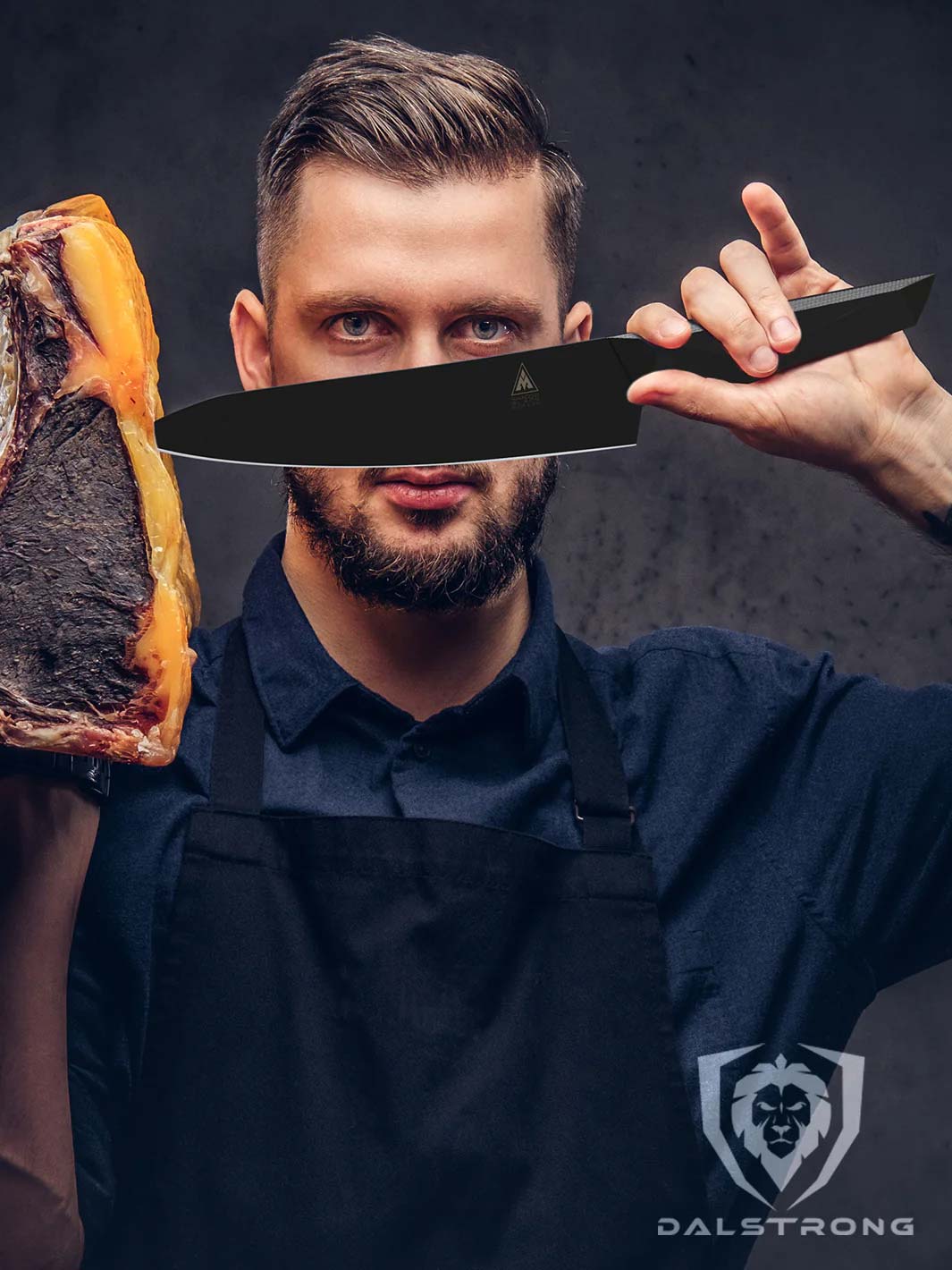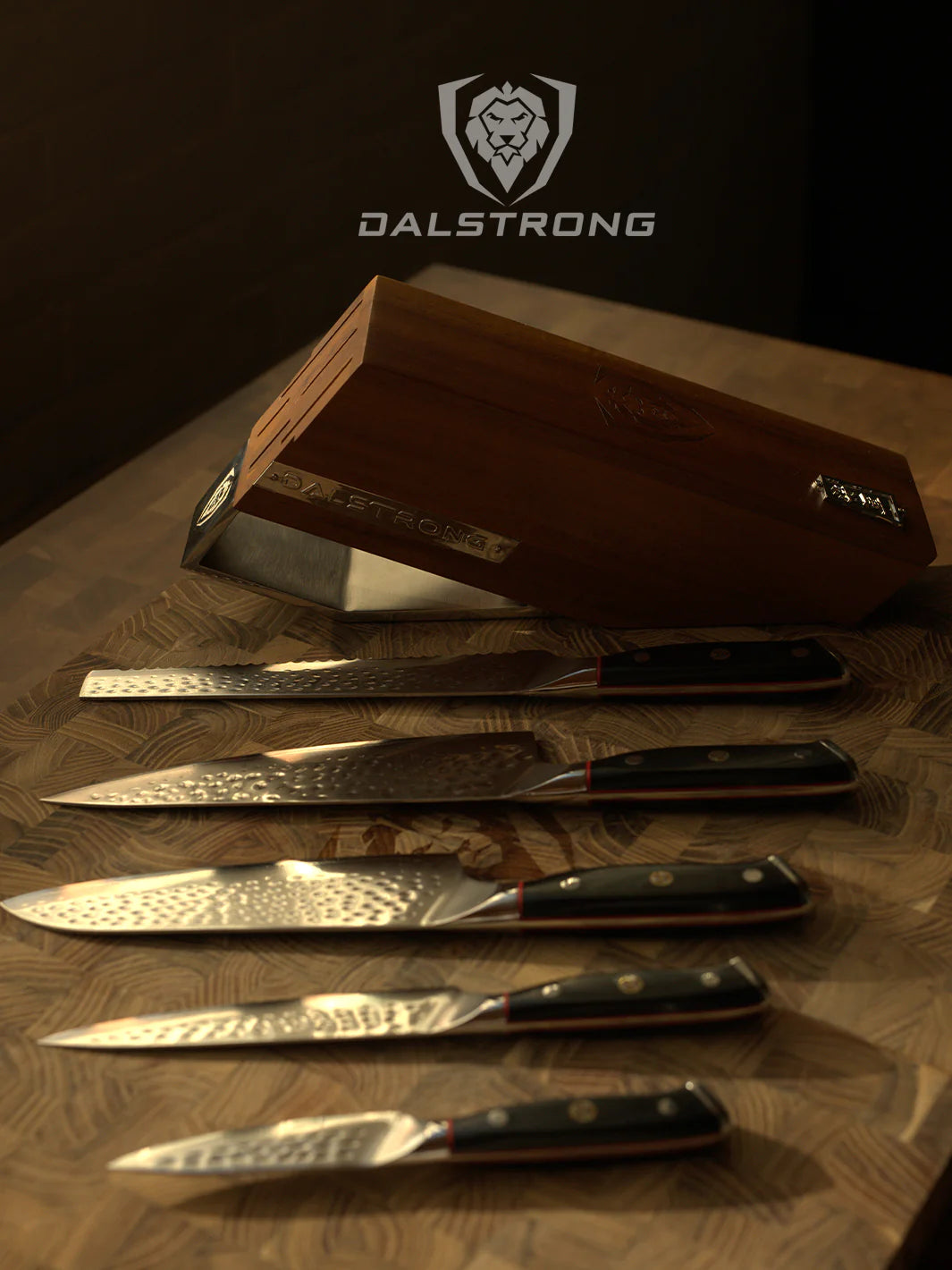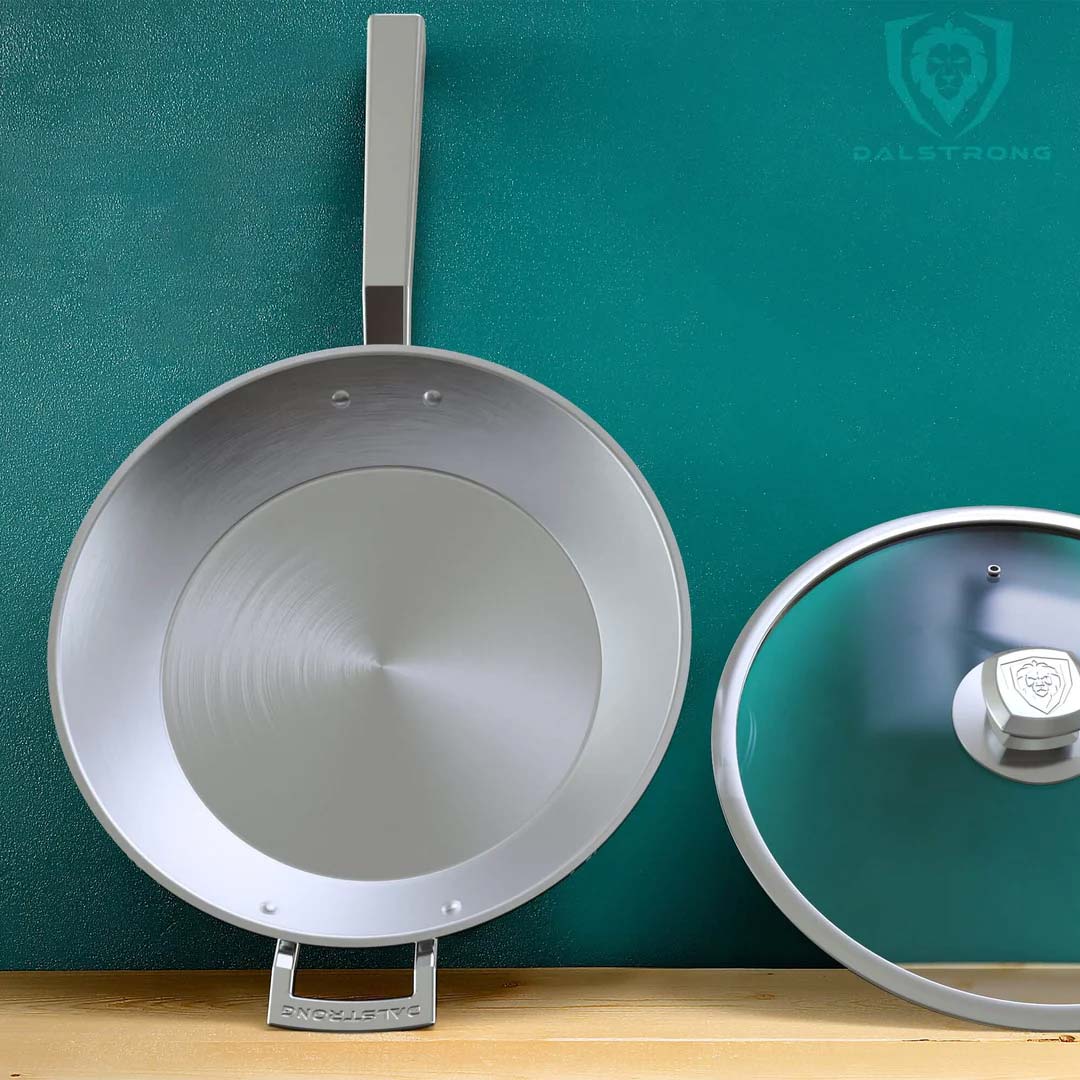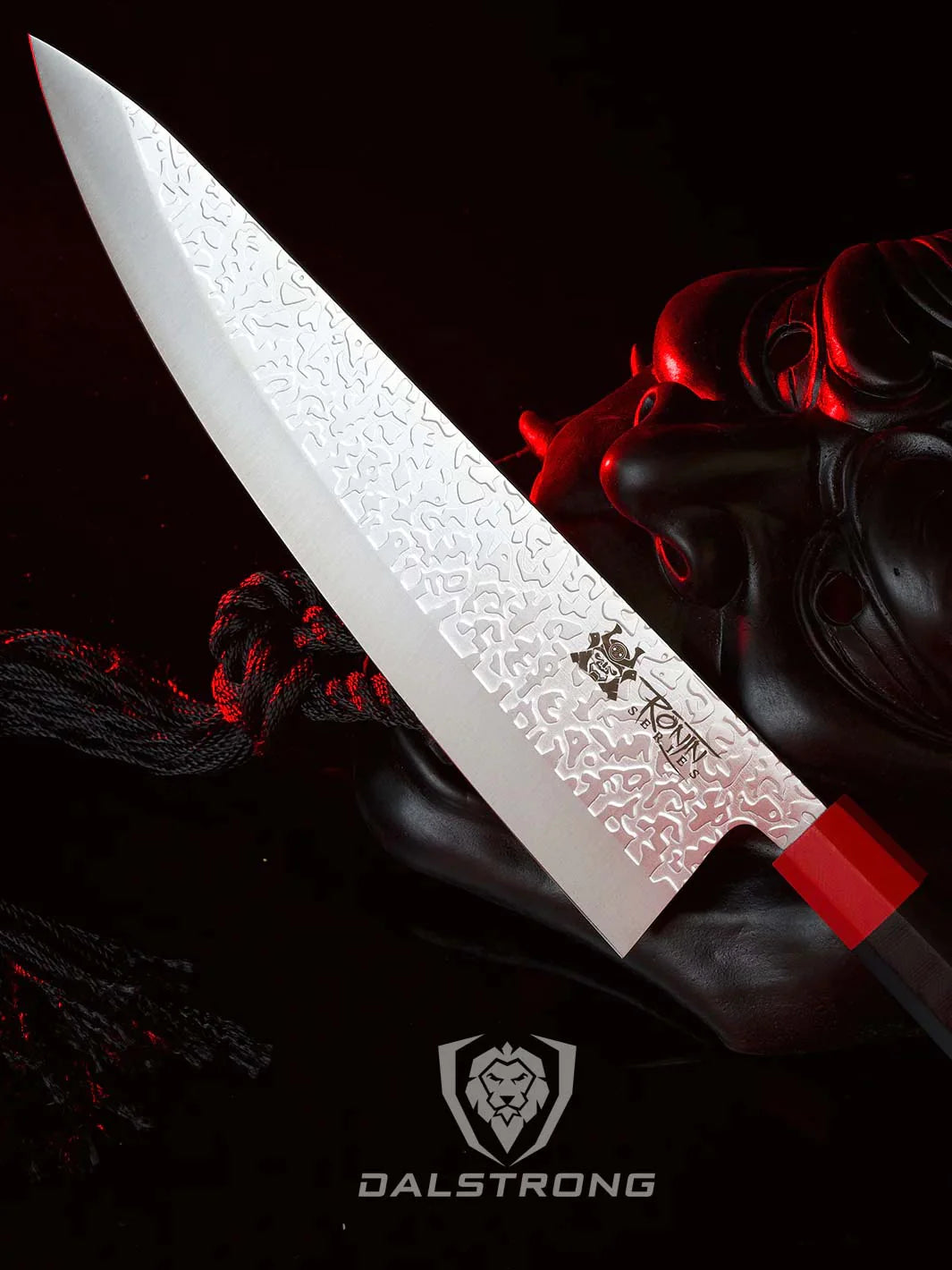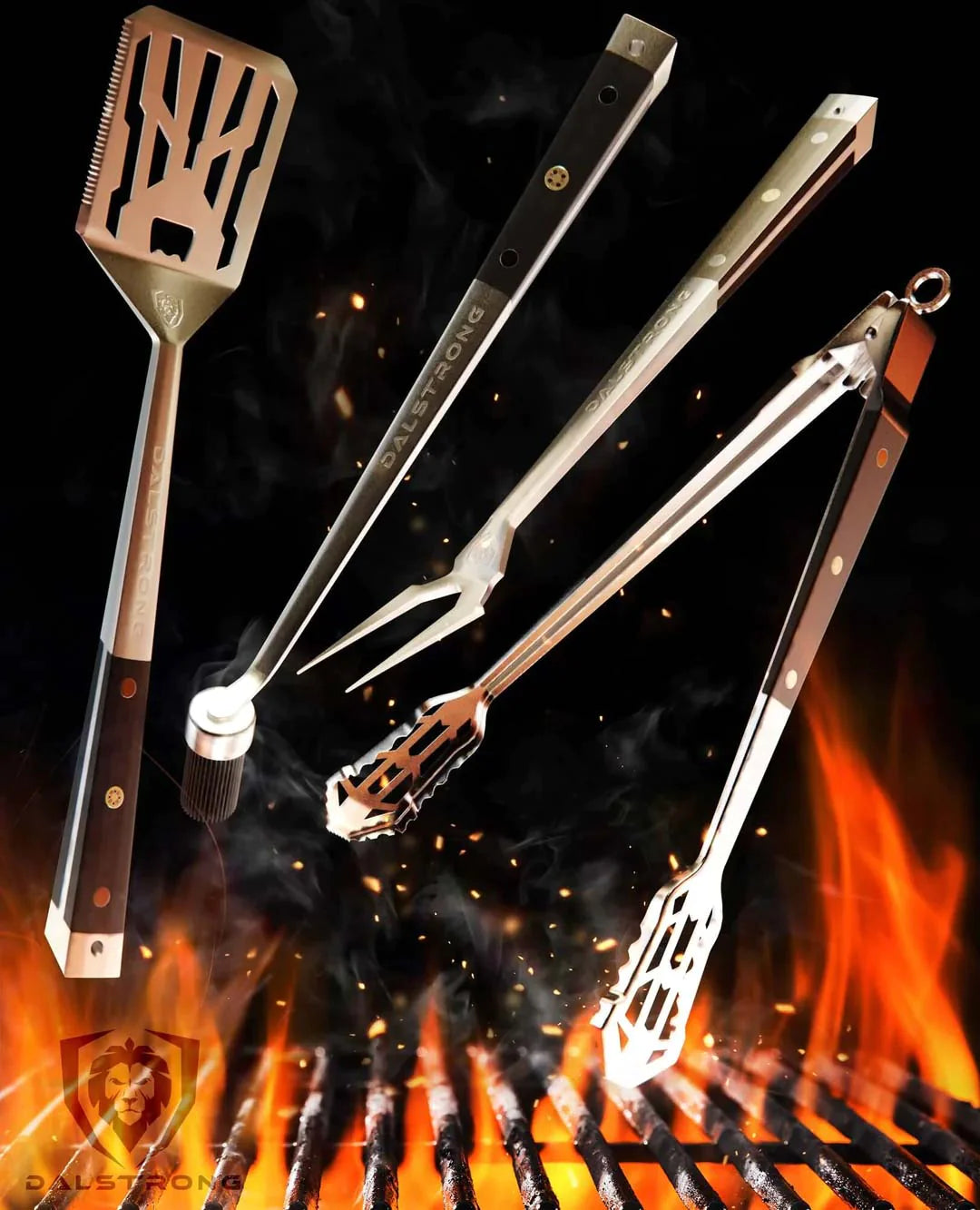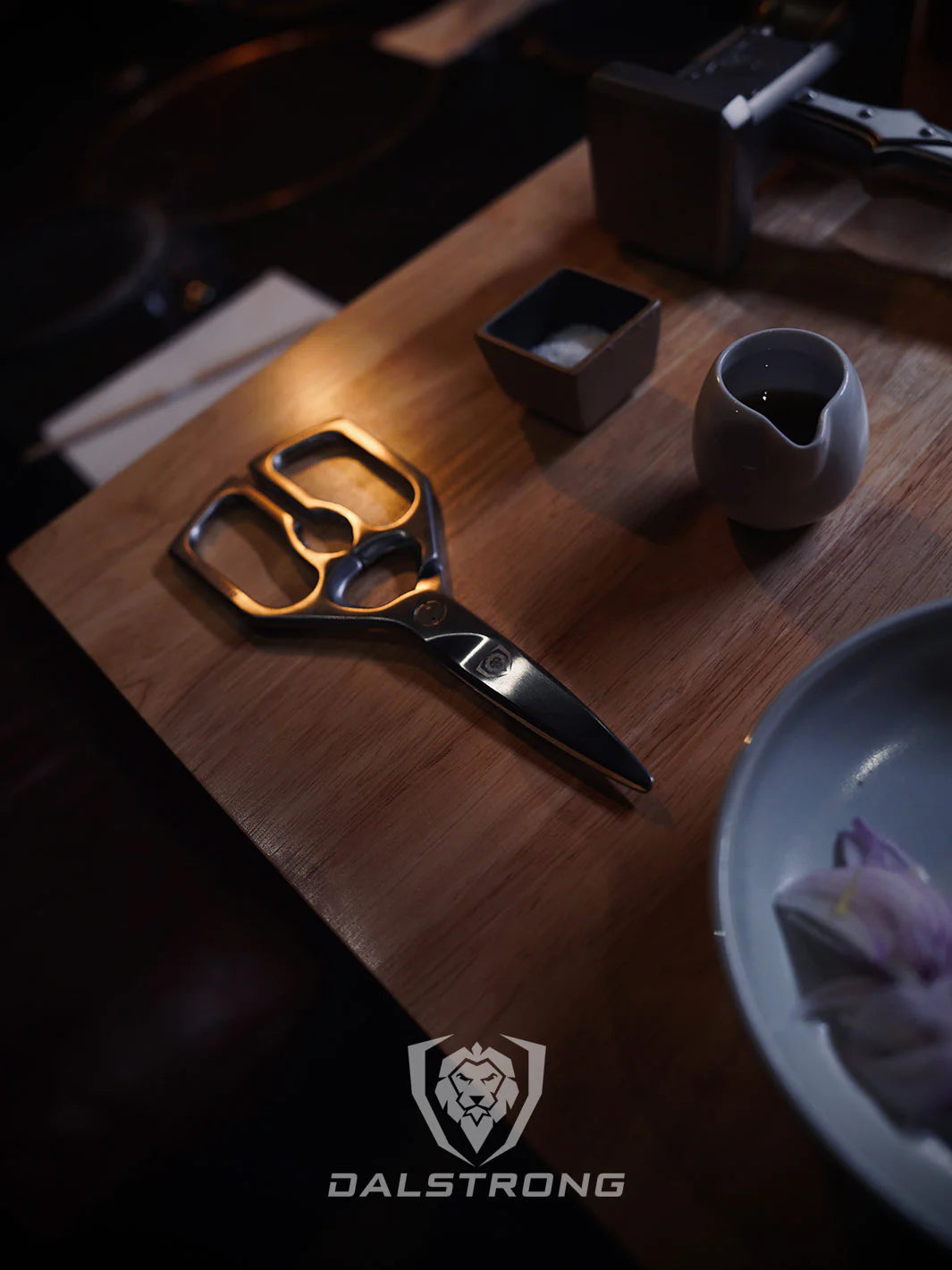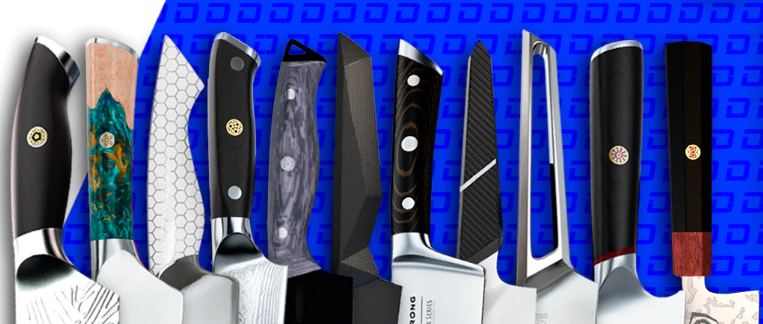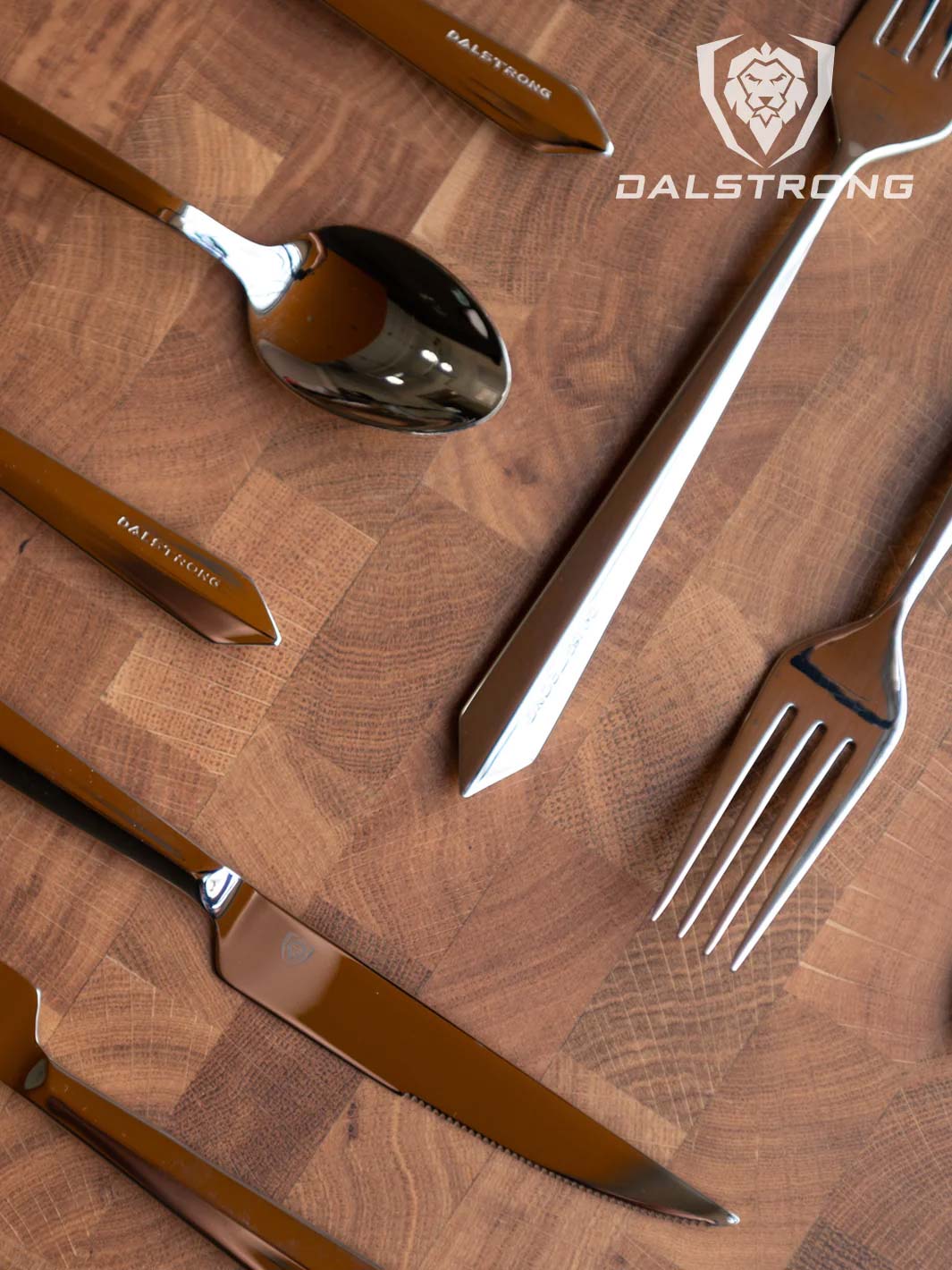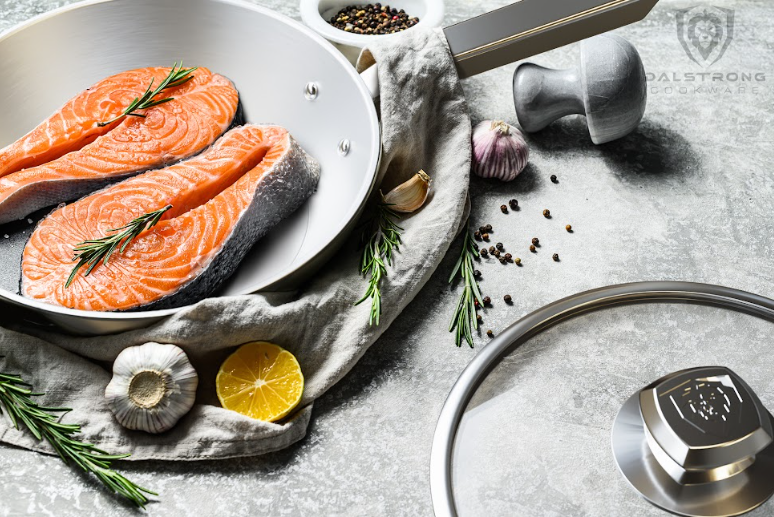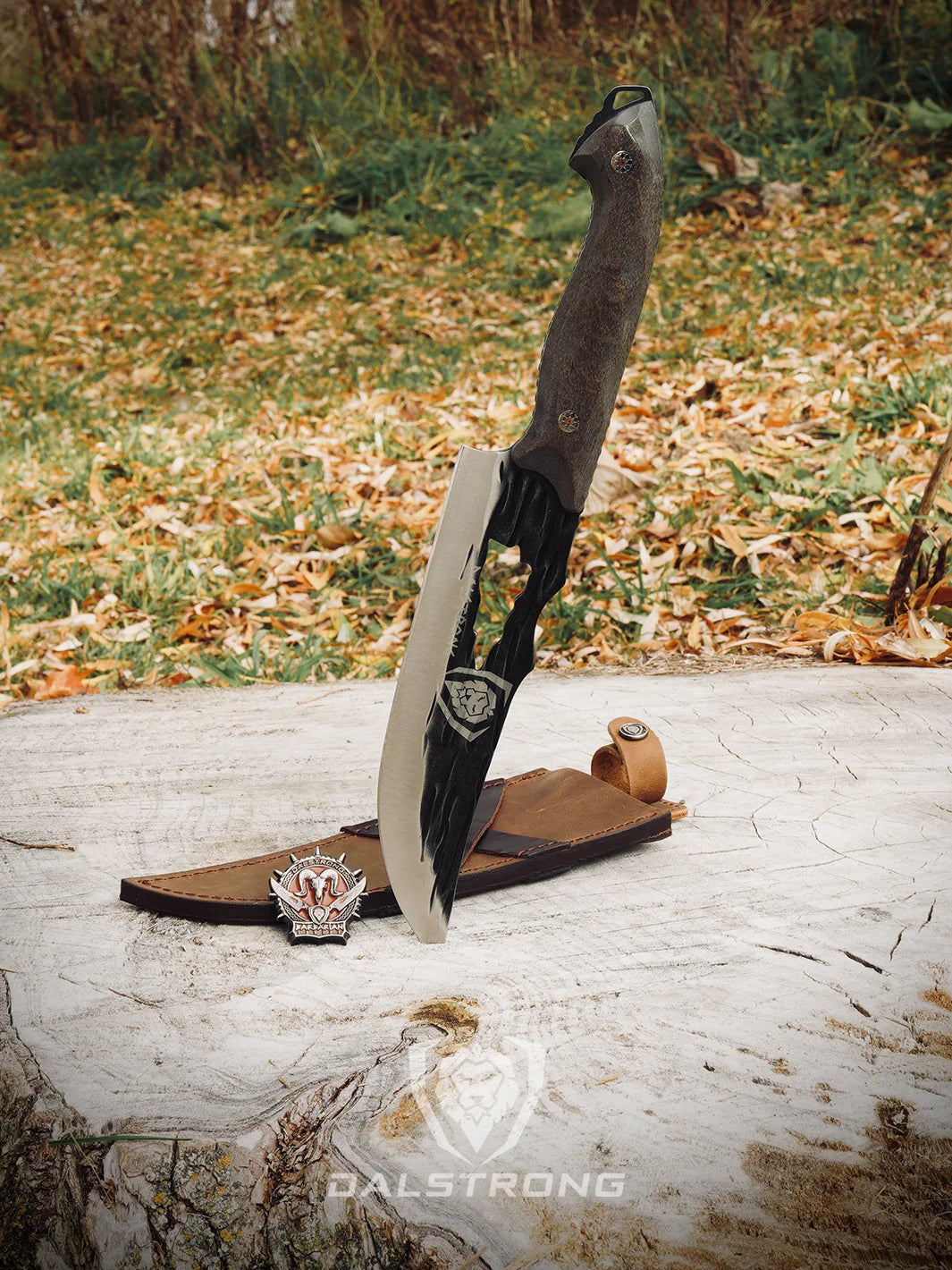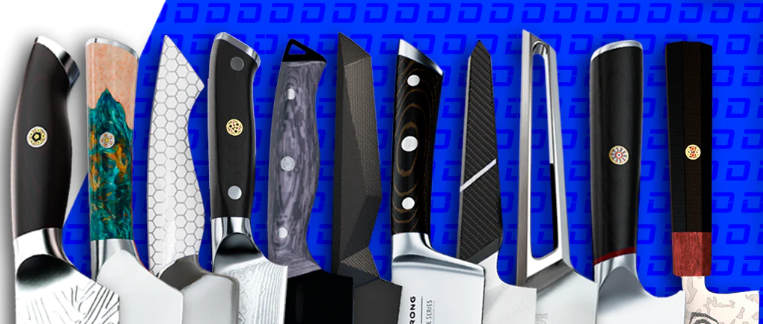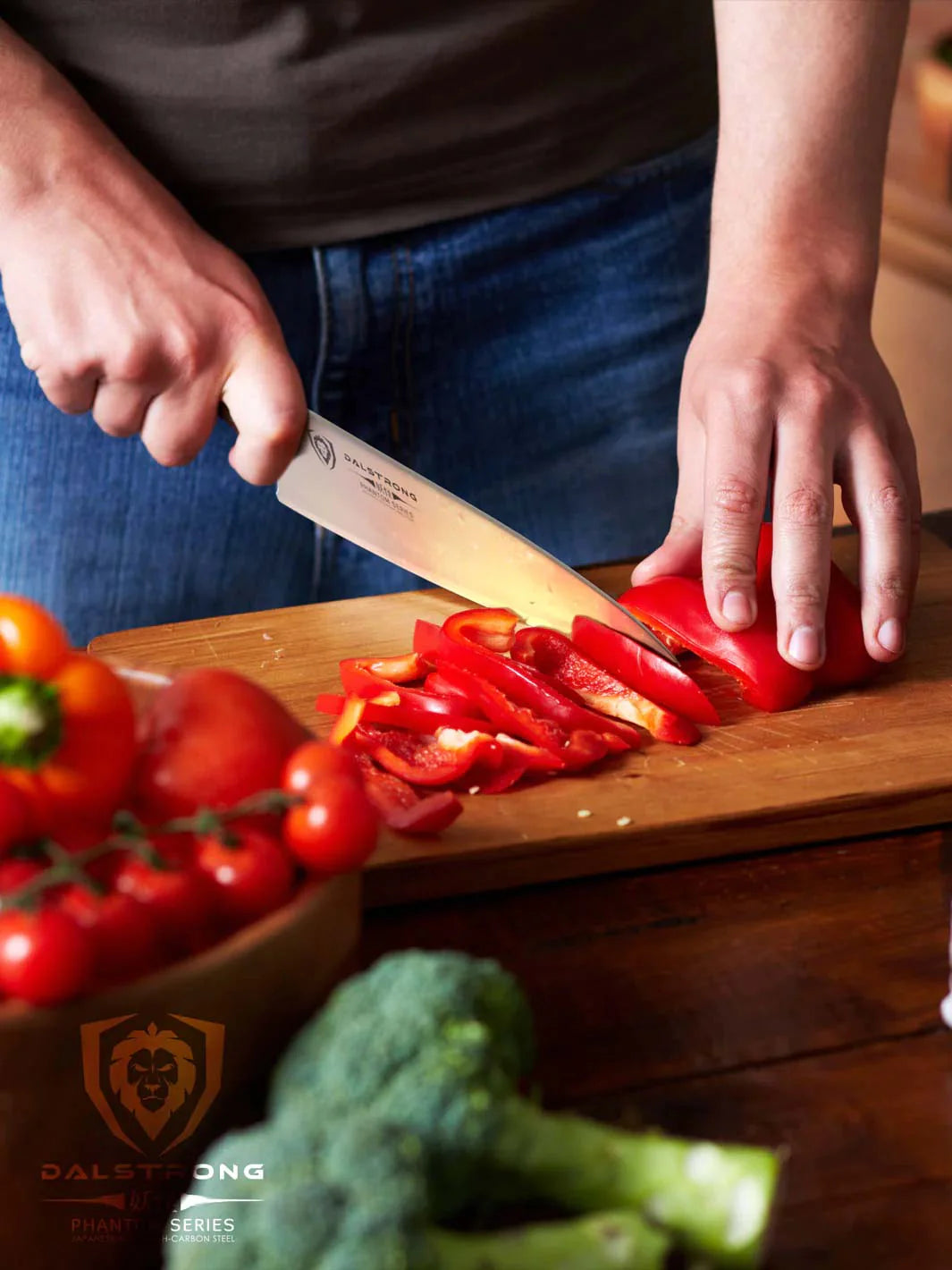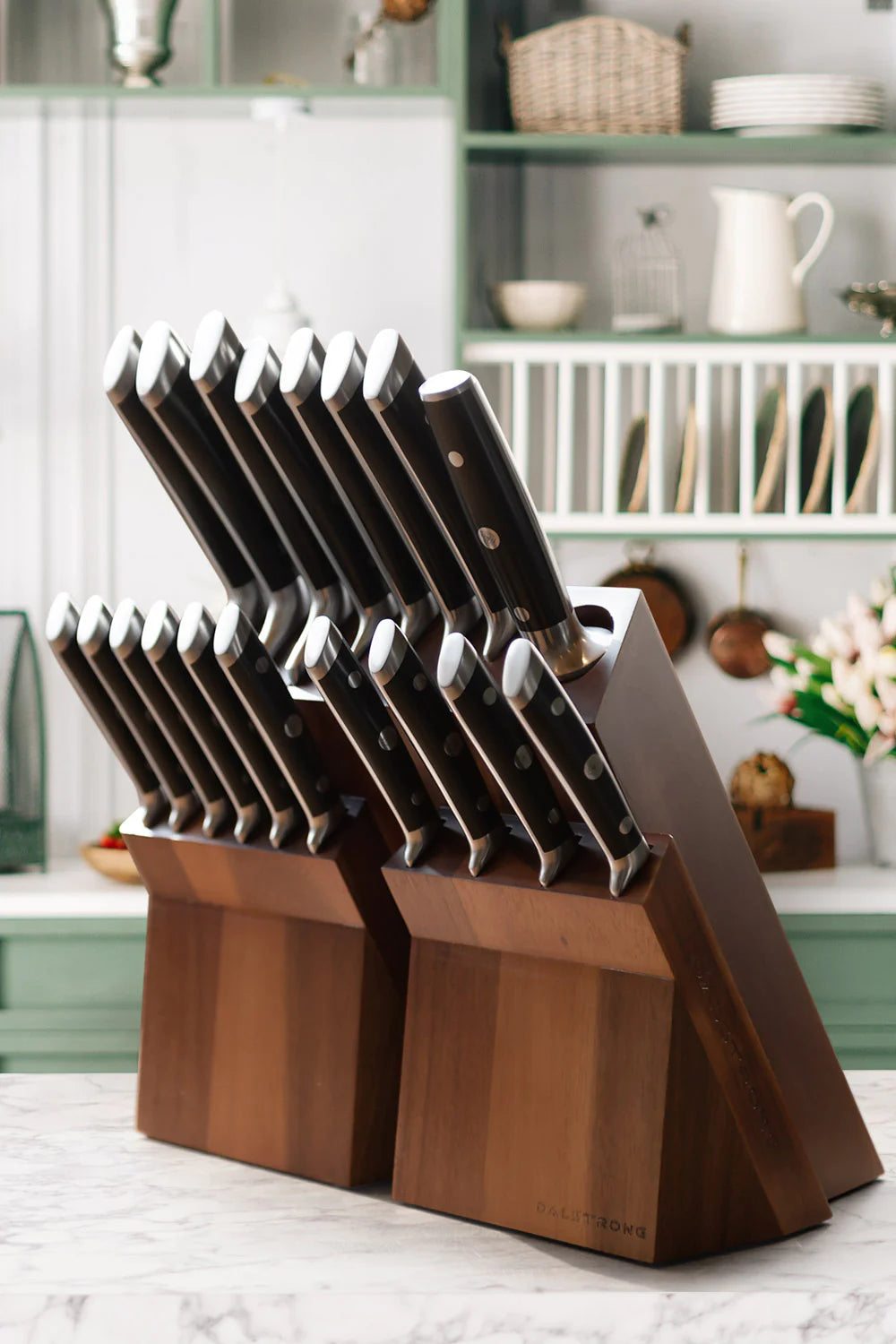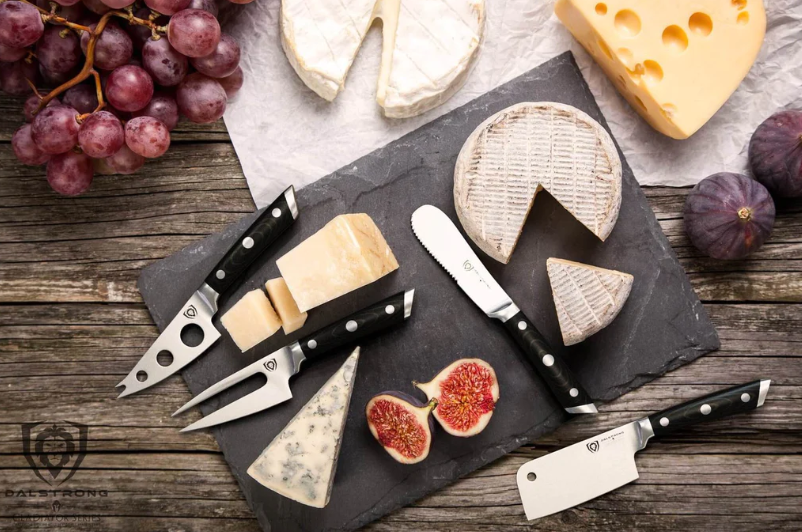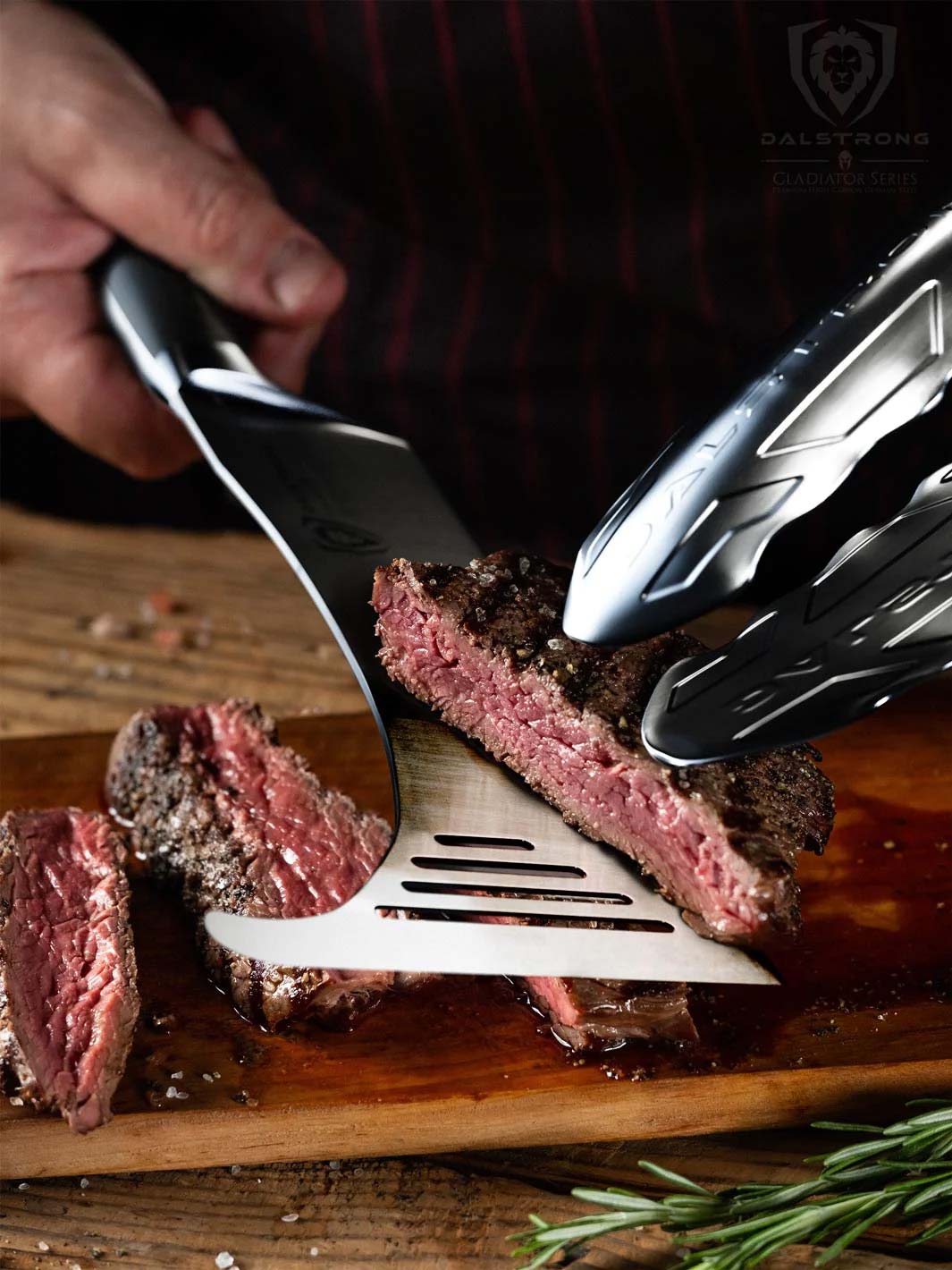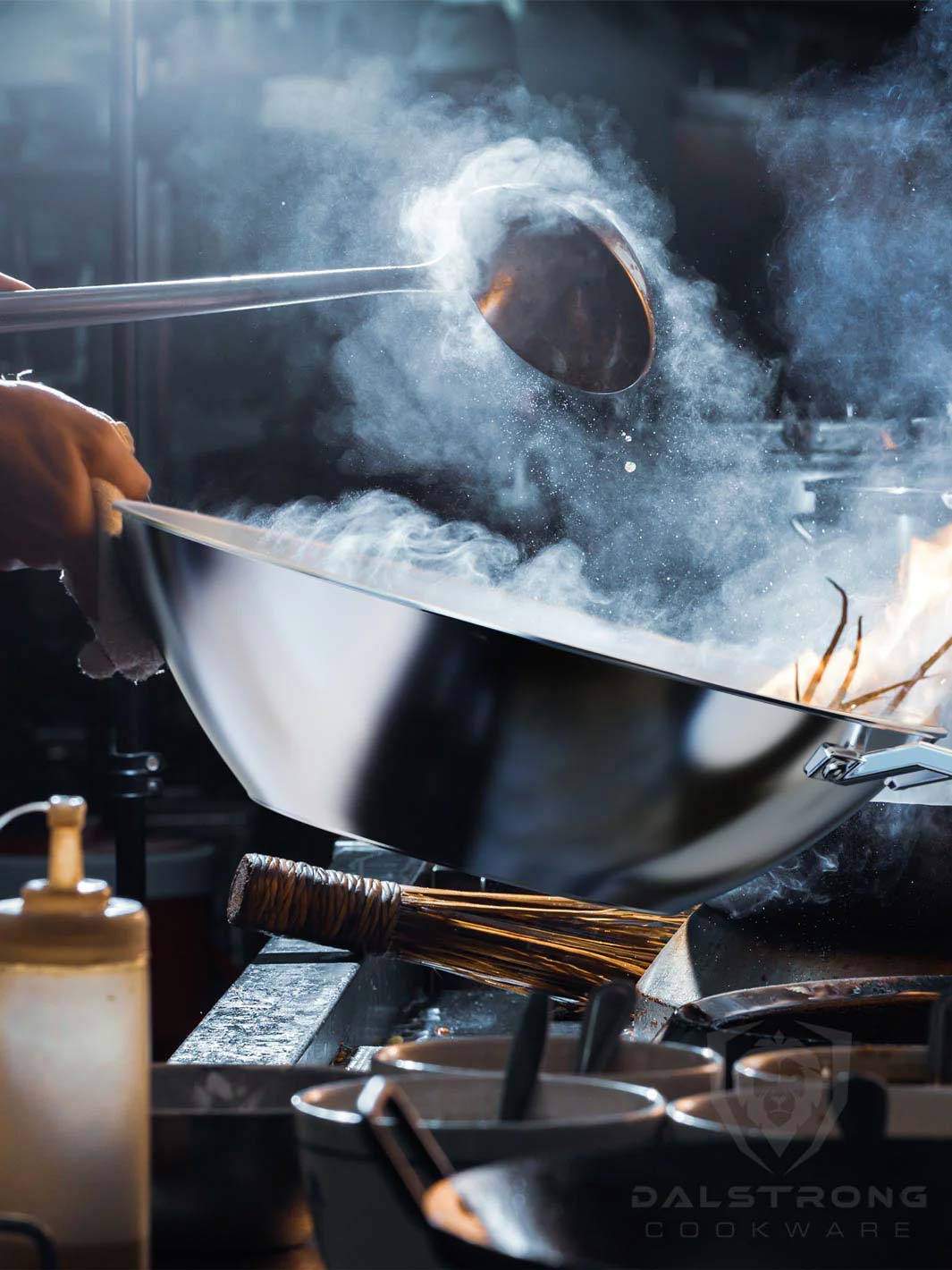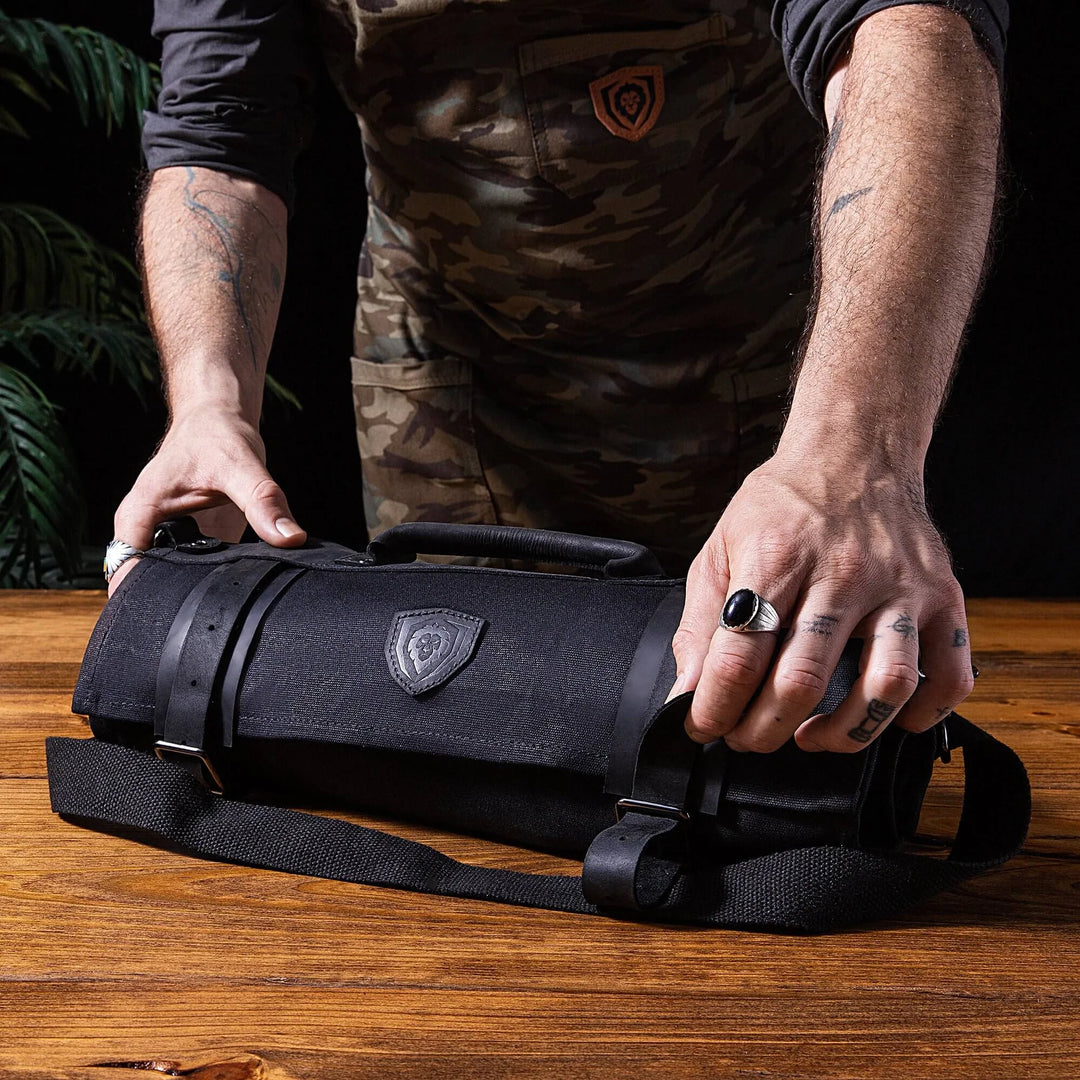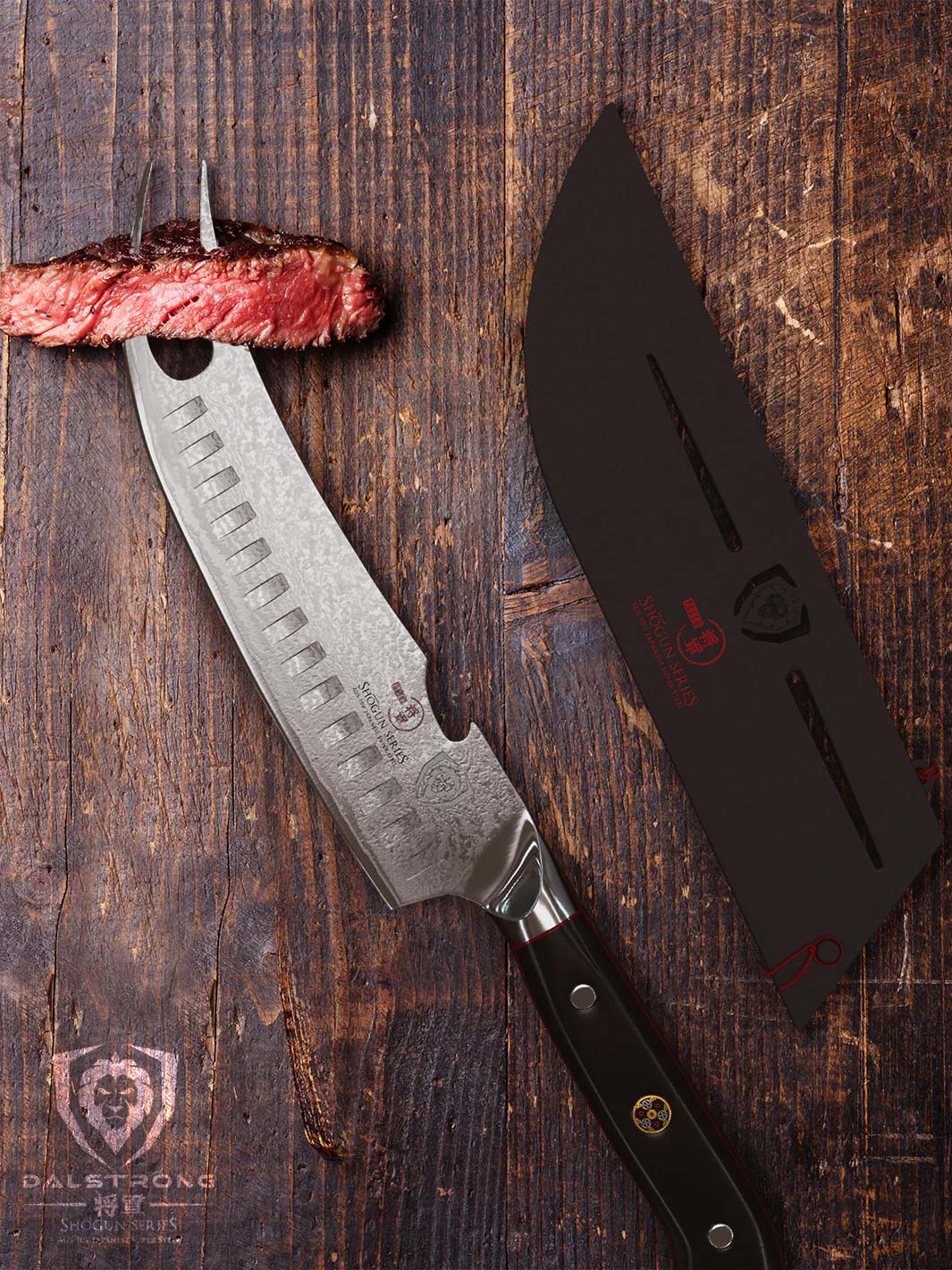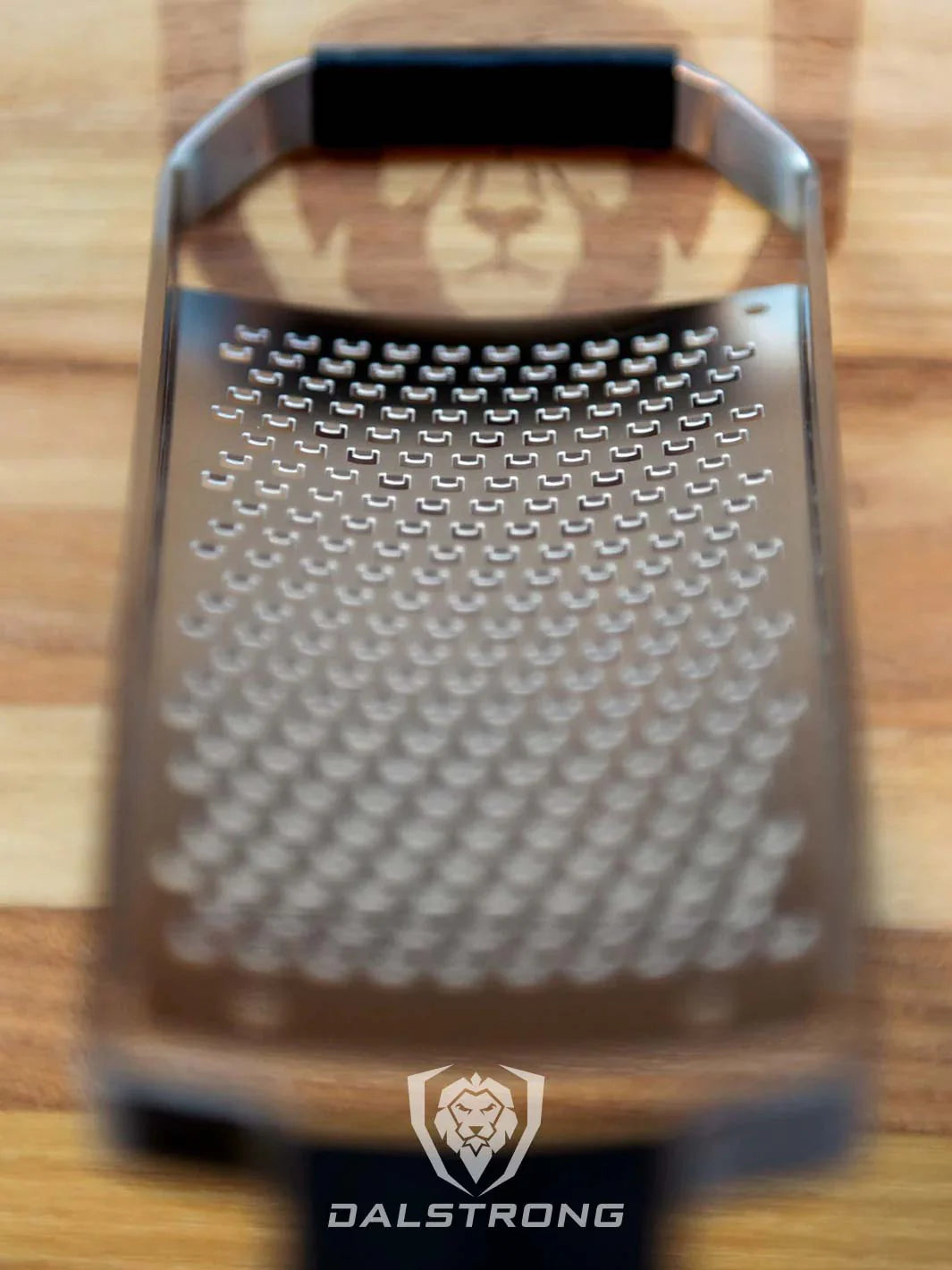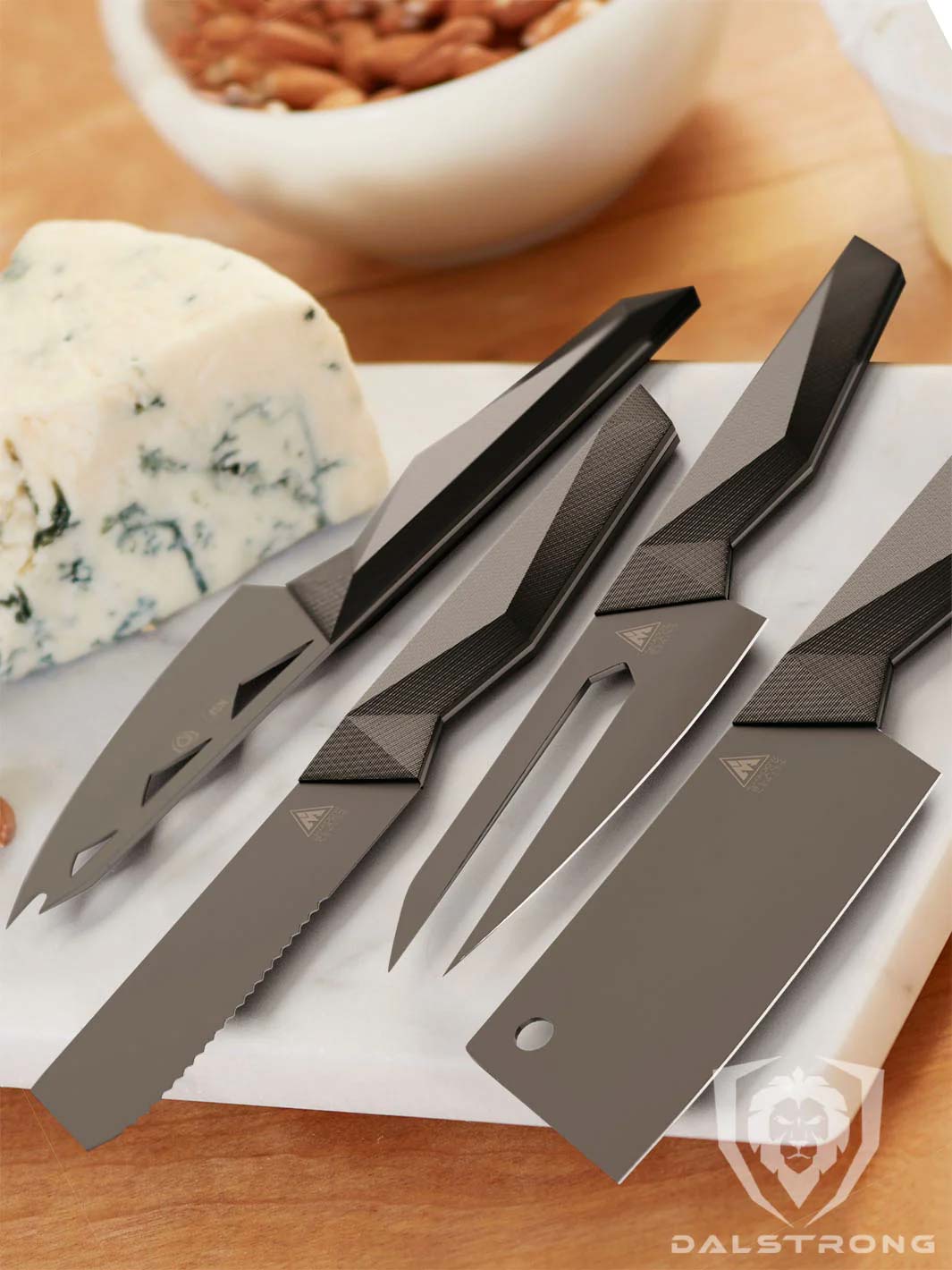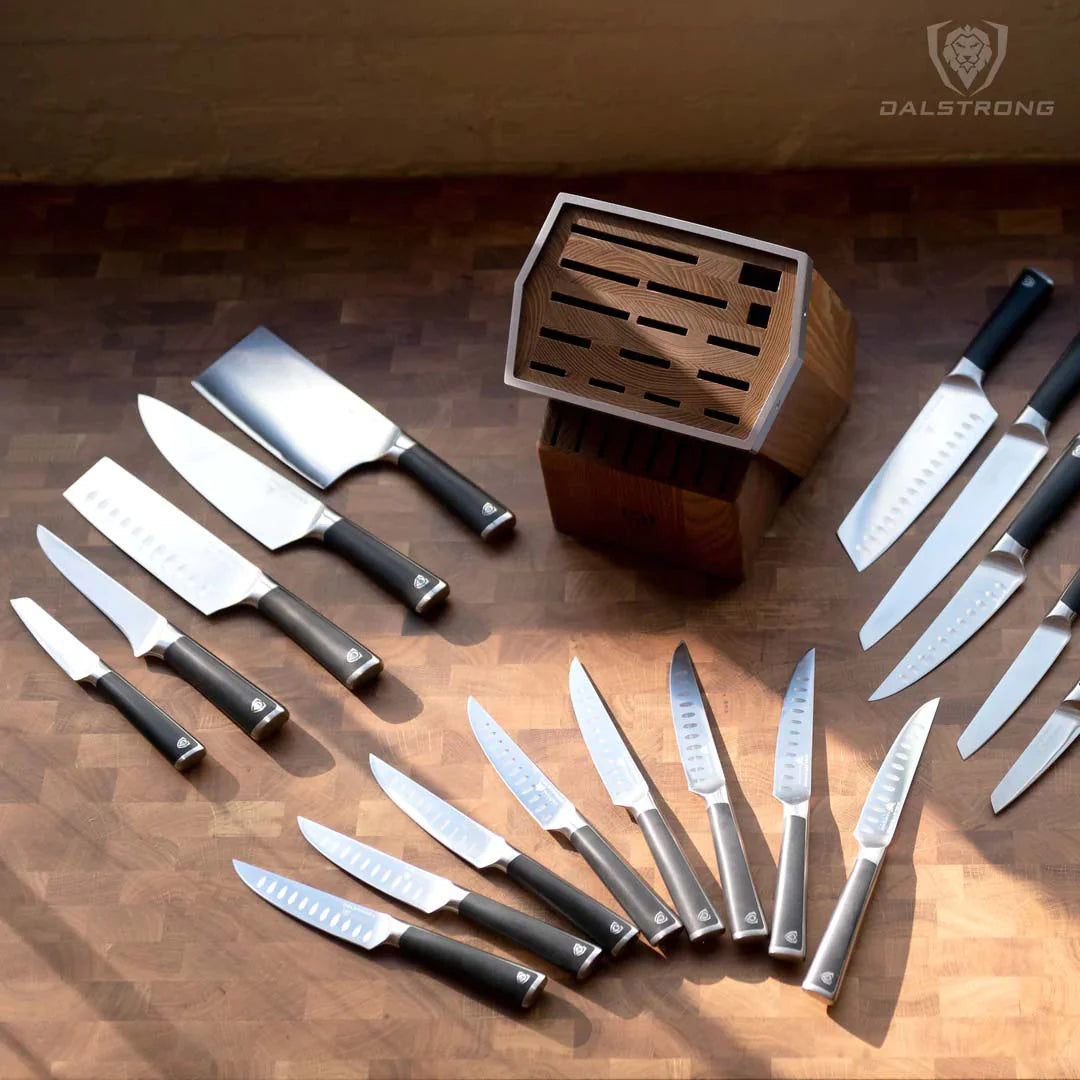Everything You Ever Wanted to Know About the Vegetable Knife
 Vegetable Knife 7" Nakiri | Quantum 1 Series
Vegetable Knife 7" Nakiri | Quantum 1 Series
Everything You Ever Wanted to Know About the Vegetable Knife
What is a vegetable knife? Several kitchen knives can be used to work with vegetables, such as a chef’s knife or a paring knife. But a Nakiri, a type of Japanese knife specializing in cutting vegetables, is what’s going to get you the best results.
1. What is a Vegetable Knife?

Here’s a confession: when I think of the concept of a “kitchen knife,” my mind immediately defaults to meat. Specifically, that satisfying feeling of slicing into a juicy piece of beef. I can’t help it! I’m a beef enthusiast who seriously enjoys the feeling of slicing up a piece of steak for serving, using a carving knife on a piece of brisket, or using a butcher knife for preparation. For better or worse, that’s my platonic ideal for what a “kitchen knife” is.
But of course, this misses the point. Just like meat isn’t the only thing on my diet, there’s a whole other world of kitchen knives out there – some which are specialty knives fulfilling extremely specific tasks, and some which can be used to conquer a variety of kitchen challenges.
Cutting vegetables is one of the essential kitchen tasks any home cook needs to master, so of course, a vegetable knife is an essential tool in your arsenal. But what do we mean when we talk about a vegetable knife? Can’t we just use our trusty old chef’s knife for that? Do we need a knife that’s dedicated solely to vegetable chopping, slicing, and dicing?
The truth is: yes, you could get away with using just a chef’s knife to accomplish most of the everyday tasks in your kitchen. But if you want to take the next step towards culinary excellence, you need to set yourself up for success. You need the tools that are specifically designed to get that perfect chop, that seamless cut, that razor-thin slice for all manner of foods.
So which knives can we use as vegetable knives? There are a few, but these are the three main ones.
The Nakiri knife is a type of Japanese knife designed specifically for use in fruit and vegetables. It is a rectangular blade with no tip, and it features a flat edge. This allows you, as the home cook, to effortlessly slice through green onions, tomato skin, or any other food that might give you trouble with a different type of knife. From julienning peppers to slicing coleslaw, this excellent piece of kitchen engineering is the perfect tool for prepping any veggie you can think of.
Ah yes, the deceptively tiny paring knife; a knife that shows us all that power and usefulness do not necessarily correlate with size. This small knife is your go-to when you’re looking for tiny, precise cuts, for intricate cutting, peeling, mincing, and dicing small fruit and vegetables.
Yep. The old workhorse. There’s no getting around it: chef’s knives are fantastic kitchen tools. And while most casual cooking enthusiasts can get around with just a chef’s knife, you can do so much more if you look into getting a dedicated vegetable knife like a Nakiri.
So if you’re ready to take the leap, let’s take a look at what you need to know before buying your very own vegetable knife.
2. How to Use a Vegetable Knife

When you’re holding a Nakiri knife, one of the first things you’ll notice is its flatness. Indeed, the flatness of your vegetable knife is one of the key advantages it has over other knives, and what makes it such a formidable tool when it comes to cutting vegetables.
What you’ll want to do is apply a simple push-forward and pull-back movement. Hold the knife against the vegetable so that the first part of the knife that makes contact is the edge of the blade, not the tip. Then simply move the blade down and forward in one swift motion; then, simply pull it back up and do it again. You’ll make it through that head of lettuce in a matter of seconds.
Here’s a step-by-step rundown:
- Grab the Nakiri knife by the handle. Shuffle your hand up until you’re holding on just ahead of the end of the handle, with your thumb and index finger. This will allow you more control over the blade.
- Curl in the fingertips of your other hand, forming a type of “claw.” This is what you’ll now place on top of the food you’re cutting, to protect your fingers.
- Now simply slide the knife down and forwards through the food, using your knuckle to guide the side of the knife. You’ll find that with a Nakiri knife you’ll be able to do this almost effortlessly, and the sound of the cut pieces hitting the cutting board is extremely satisfying.
- Simply move the knife backward and up, and go ahead. When you’ve built up a rhythm you’ll find yourself doing this for the sheer pleasure of it. Careful: you might run out of vegetables to chop!
Nakiri knives are also great at a technique called “mill chopping,” which is a very gentle tapping of the blade onto a pile of herbs, shallots, garlic, or ginger. This quick, gentle tapping (emphasis on the word “gentle”--. If your knife is sharp, this should take barely any effort) will make quick work of your vegetables without turning them into a pile of mush.
3. What to Look For When Shopping For Vegetable Knives

Searching for vegetable knives is a bit of a daunting task when you don’t know what to look for. It can feel like an overwhelming amount of information, especially if you’re dead-set on finding the absolute best.
A helpful thing to keep in mind is that there’s no real “best,” only what’s best for you. The best knife is the one that fits your needs and your preferences. I could give you a thousand pieces of data to look for but it’s not going to mean much if the knife doesn’t feel like the right knife for you. After all, you’re the one who’s going to use it to cook!
Let’s talk about a few key points you should be looking out for when shopping for a vegetable knife.
Material
There are all kinds of materials that can be used to make a great vegetable knife, but there are also important things to look out for.
Most commonly, you’ll find stainless steel knives. Stainless steel is a very popular option for good reason: it sharpens easily and it’s relatively low maintenance. It’s easy to look after, and your knife is going to be sturdy and durable.
Carbon steel is a metal alloy consisting of carbon and steel; the role of carbon is to make the steel much stronger and more durable, allowing it to hold a sharp edge for longer. However, they are prone to rust, so they’re a little more high-maintenance than other types of steel.
You might also find some vegetable knives made of Damascus steel, which combines the hardness of carbon steel with the flexibility of stainless steel. It features a carbon core and a stainless steel exterior. This is a great material for blades, but you’ll likely pay premium prices for this.
Size
For vegetable knives, you don’t want to go too big. Usually, a 5” to 7” Nakiri knife will do just fine. Yes, there are larger Nakiris out there, but you might find them cumbersome when it comes to putting them to work in the kitchen.
Paring knives, meanwhile, are much smaller; they have to be since their whole purpose is to help with tiny, intricate cuts. You’ll find these in the 2.5” to 4” range.
Weight and balance
Because Nakiris are Japanese-style knives, they tend to have a thinner blade than Western-style knives. That means they also tend to be a little lighter. That’s fine. You don’t need a lot of heft for the type of cutting you’ll be using them for.
That said, a vegetable knife should still feel substantial. It shouldn’t feel like you’re holding a piece of plastic. It is a powerful kitchen tool, and it should feel like such. But they are, on average, definitely lighter than chef’s knives or other types of knives.
When we talk about “balance” we are referring to the weight distribution of the blade. If you hold it and you find that your hand is tilting towards one side, then it doesn’t have a good balance. You’ll find it hard to use and may even grow tired of using it quickly.
Grip comfort
This one is key. A good vegetable knife should feel good to hold. You’ll find the very best ones put as much effort on the handle as they do on the actual blade – that’s because the handle is the part of the knife you’re coming in direct contact with. It shouldn’t feel strenuous, but instead like a natural extension of your body. A comfortable handle is also a safer knife altogether since you’ll tire of it less quickly and you’ll be less prone to accidents.
Visual design
This may be a controversial point, but it matters to me personally. When I buy a knife – or any piece of kitchen equipment, even a cutting board – I want it to say something about me personally. I want it to look different than most other knives on the market. I want it to look good. Sure, the most important part is how it works, but an attractive knife design is a plus. If you’re like me, you’ll be looking for knives with distinctive blade patterns, or with particularly nice-looking handles.
4. Top 7 Vegetable Knives to Buy
Now you know what to look for when buying a vegetable knife – let’s take a look at some of the best vegetable knives in the market.
1. Nakiri Knife 7" | Gladiator Series
This ruthless seven-inch Nakiri knife is the fantastic amalgamation of the best features of a chef knife and a vegetable cleaver. However, it’s not a vegetable cleaver; its unique shape, featuring a square tip and flat profile, makes this an ideal produce knife for push cuts.
PROS:
- Rock-hollow divots minimize stuck-on food, making your chopping that much easier and more enjoyable.
- Precision forged, ultra sharp, wear-resistant single-piece high carbon German stainless steel, with a 56+ Rockwell hardness score.
- Vegetable cleaver design.
- Features a gorgeous and ergonomic black G10 Garolite knife handle.
- Highly impervious to heat, cold, and moisture.
CONS:
- Though this Nakiri blade is perfectly balanced, it does skew towards the heavy side when it comes to its weight.
- Its simple, elegant design might not be for you if you’re looking for a flashier knife. If that’s the case, maybe look into the next knife in this list…
2. Nakiri Vegetable Knife 6" | Shogun Series X
As part of Dalstrong’s acclaimed Shogun Series X, this incredible piece of kitchen gadgetry is the most impressive-looking vegetable knife you will ever buy. Not only is this 6-inch Nakiri knife an absolute stunner when it comes to looks, but it’s also a top-of-the-line performer in the kitchen.
PROS:
- Features a gorgeous hammered Tsuchime finish and Dalstrong’s beautiful Tsunami Rose pattern on the blade.
- A precision-forged blade made of ultra-premium Japanese AUS-10V super steel cutting core at 62+ Rockwell hardness. 66 layers of high-carbon stainless steel cladding for extra strength.
- Gorgeous, well-designed handle.
- A ruthlessly sharp knife, hand-finished to a mirror polish within 8-12 degree angle per side, using the traditional 3-step Honbazuke method. Probably the sharpest knife on this list.
- Its precise tapering minimizes any surface resistance, helping you cut much more easily.
CONS:
- Want a top-of-the-line product? This mighty kitchen knife is going to cost you. You’ll find it’s one of the most expensive items on this list. However, ask anyone who’s ever tried it out and they’ll say it’s more than worth it.
- This is a 6” knife; if you want something closer to a chef knife in size, maybe look into some of the other Nakiri options in this list (or, better yet, check out my personal favorite chef’s knife from this same series, the 10.25” Shogun Series X chef’s knife.
3. Paring Knife 3.5" | Gladiator Series
For small, precise cuts, a paring knife is what you want to go with. And this 3.5” paring knife from the Gladiator Series gives you the comfort and precision you need to core, mince, peel, or slice any fruit or vegetable you need.
PROS:
- Carefully designed for comfort; fantastic paring knife for slicing shallots, herbs, or garlic.
- Made of ultra-sharp, wear-resistant, single-piece high carbon German stainless steel.
- Hand sharpened to 16-18 degrees per side, this knife retains the perfect balance between sharpness and sturdiness.
- Its full tang helps provide a feeling of robustness and maneuverability.
- Ergonomic handle design.
CONS:
- Do keep in mind that this is a paring knife, so it’s best suited for small cuts. If you’re looking for something larger, check out the other knives featured in this list.
- If you’re looking for something even smaller for more precise cuts, check out this gorgeous 3” bird’s beak paring knife peeler.
4. Nakiri Vegetable Knife 7" | Shadow Black Series
Every time I talk to someone about the awesomeness that is the Shadow Black Series, I have to pick my words very carefully lest I come off as an unhinged lunatic. But it’s true: these knives look like futuristic pieces of tech that you snuck out of a secret government facility. And thanks to their sharp blades and comfortable handles, they work like an absolute dream.
PROS:
- Just look at its sleek, menacing, cooler-than-cool design, featuring a unique geometry and a midnight black Titanium Nitride non-reflective coating.
- Features an extremely comfortable ergonomic fiber-resin military-grade G10 handle, which is nearly impervious to heat, cold, and moisture, as well as designed to tuck comfortably in your palm.
- Made of ultra-sharp, single-piece high carbon vacuum-treated 7CR17MOV-X steel.
- The knife’s edge is painstakingly hand-sharpened to 16-18 degrees per side; won’t require frequent sharpening.
CONS:
- If you’re not into the look, then of course you won’t be into this knife. Perhaps you’re the kind of person who prefers their cutlery to all match, for instance.
- The non-reflective titanium-nitride coating might make sharpening a little awkward at first, but you’ll get a hold of it quickly.
5. Nakiri Knife 6.5" | Frost Fire Series
The knives in Dalstrong’s Frost Fire Series are lightweight, razor-sharp, and gorgeous. These are perfect knives to give as gifts or to have as part of your kitchen arsenal. If you’re anything like me, you can’t get enough of their distinctive look and breezy feel.
PROS:
- Engineered with a 7-layer, high-chromium 10CR15MOV steel with added cobalt and heat treatment.
- Extremely comfortable knife to use, with a slender, ergonomic, white resin handle; it feels nice to hold, a tension-free grip which makes sailing through vegetables an utter delight.
- Absolutely lovely honeycomb design on the handle, and the blade features a sandblast finish for a “frosted” look.
- Excellent edge retention at 60-61 Rockwell.
CONS:
- These easy, breezy knives might not be everyone’s cup of tea as far as heft is concerned; if you’re looking for a heavier Nakiri knife, check out the 7” Nakiri knife at the top of this list.
- The honeycomb pattern on the handle may not be to everyone’s taste.
6. Utility Knife 6" | Crusader Series
Sometimes you need a knife that can do a little bit of everything, and that is strategically placed between a paring knife and a chef knife when it comes to its size. Enter the utility knife, your secret weapon in the kitchen, and one of your best allies in the war against the structural integrity of your produce.
PROS:
- As part of Dalstrong’s Crusader Series, this 6” utility knife is an all-steel knife featuring a gorgeously minimalist aesthetic and a less-is-more approach to design. Timeless, unobtrusive elegance.
- It is made of a single piece of precision forged, ultra-sharp, wear-resistant high carbon ThyssenKrupp German stainless steel at 58+ Rockwell.
- Since it’s a single piece of steel with seamless transitions, there’s no place for debris to hide. Hygienic and low maintenance.
- Stain-resistant and precisely tempered for resilience.
CONS:
- These gorgeous all-steel knives might not be what you’re looking for if you’re interested in something a little more dazzling when it comes to its appearance; in that case, you’ll find plenty of examples of that in this list.
-
Since it features a hollow handle, these knives tend to be a little lighter than most others featured here; but that might be just what you’re looking for in a vegetable knife.
7. Vegetable Knife 7" Nakiri | Quantum 1 Series
This might very well be the ultimate vegetable knife. This ruthless kitchen powerhouse, from Dalstrong’s Quantum 1 Series, not only looks like something that was designed in a lab in the Starship Enterprise – it works like it, too.
PROS:
- Made of ultra-sharp wear-resistant high carbon American steel with an added vacuum heat seal treatment.
- Features the Nova Prime blade pattern, which doesn’t only look super cool, it also increases efficiency.
- Hand sharpened to 8-12 degrees per side.
- The handle is made of military-grade G10 and carbon fiber hybrid, which is nearly impervious to heat, cold, and moisture. It also features an ergonomic shape, increasing its comfort.
CONS:
- This is another high-quality knife, meaning it’s also an expensive knife. A “you get what you pay for” type scenario. If you’re ready to take that step to get a truly next-level knife, great. But if you’re not quite there yet, there are plenty more budget-friendly (and still excellent) options available to you here.
- Definitely a hefty kitchen knife. If you’re looking for something a little lighter, try the Frost Fire knife above.
5. Frequently Asked Questions
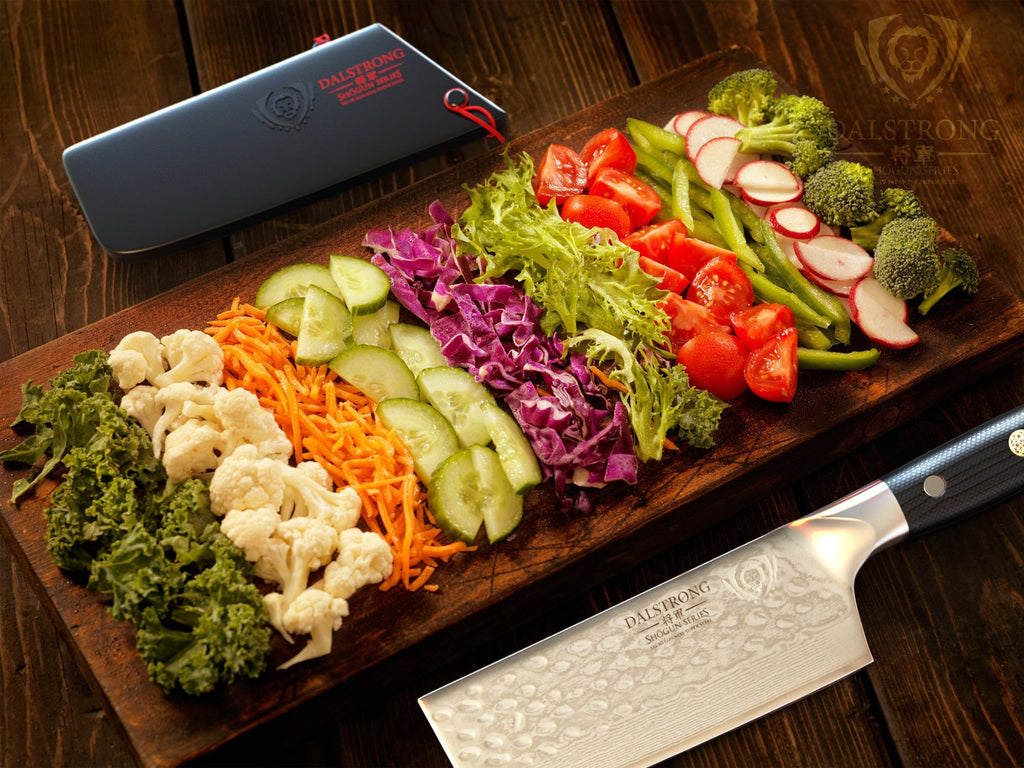
Which knife is best for cutting vegetables?
The simple truth is that the best knife is the one you have. That holds true for just about every type of food. But if you have options, you should look into getting a knife that’s specifically designed to cut vegetables. Nakiri knives are great for this, as well as chef’s knives (and, for the smaller cuts, a paring knife will get you out of a jam – just don’t use a bread knife!).
How long should a vegetable knife be?
If we’re talking about a Nakiri knife blade, you’ll usually find them in the 5-to-7 inch range. Any larger than that, you’re probably just looking at a chef knife. When it comes to performing small, precise cuts, paring knives are the way to go, and those can be as small as 2.5” (though they’re more common in the 3” - 4” range).
Can I use a chef’s knife to chop vegetables?
Yes! Thousands of people make do with just a chef’s knife to chop vegetables, and they’re doing just fine. A good vegetable knife is more of a “nice to have” tool that will increase your efficiency and pleasure in the kitchen, but it’s not a must-have essential.
What is a vegetable knife called?
The most common (and efficient) type of vegetable knife is the Nakiri knife. The name of the Nakiri knife roughly translates from Japanese to “leaf cutter.”
Shop Vegetables Knives Today
Written by Jorge FarahBorn on the coast of Colombia and based in Buenos Aires, Jorge is a cooking enthusiast and kitchenware obsessive with a tremendous amount of opinions.


















































































